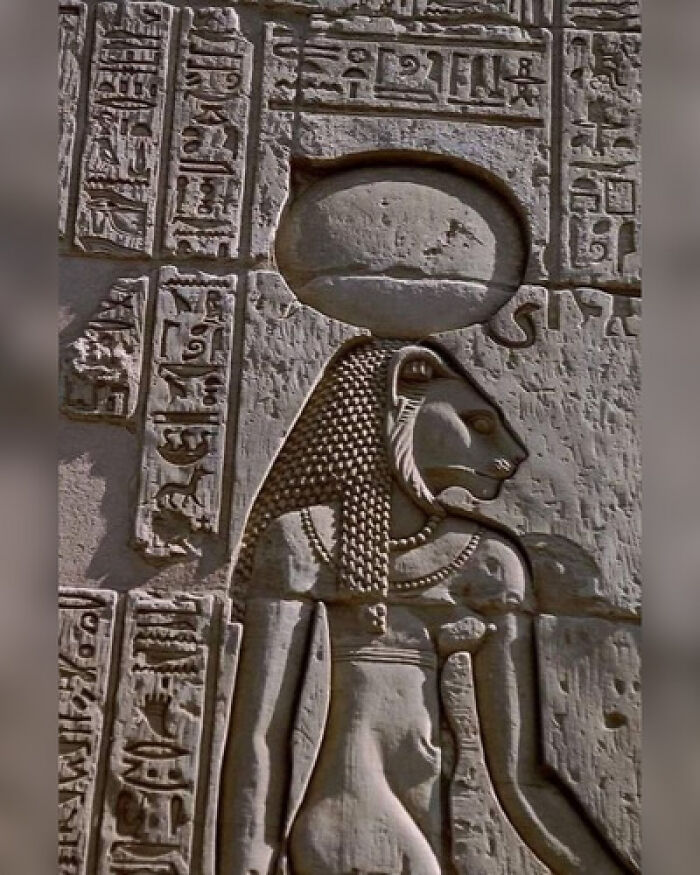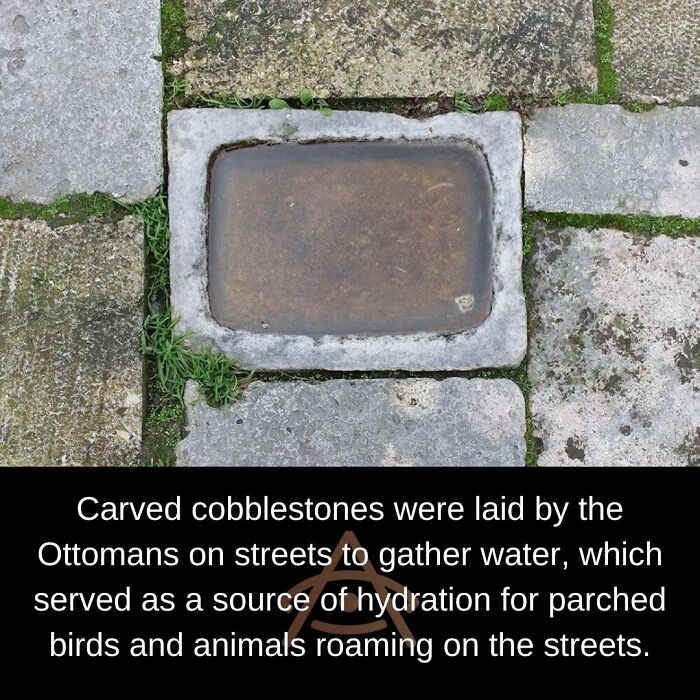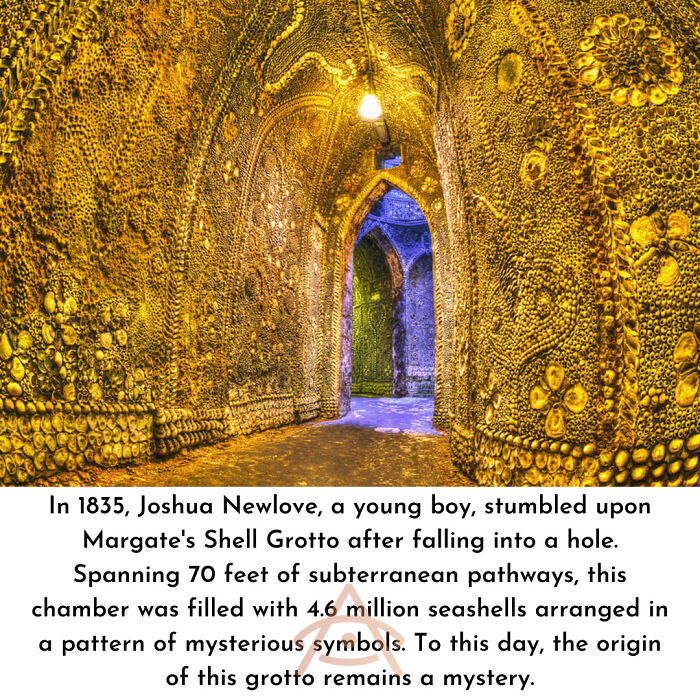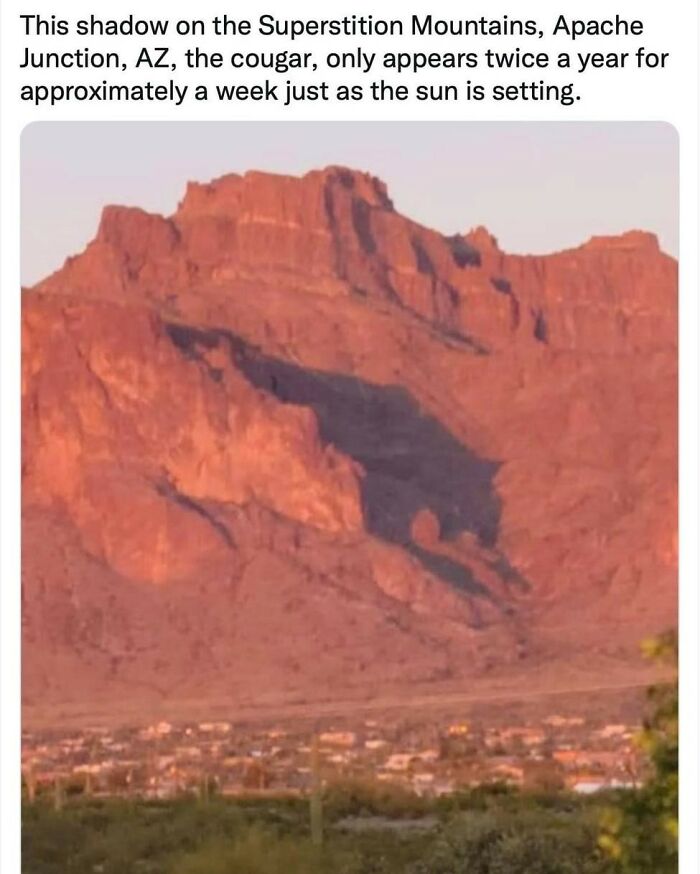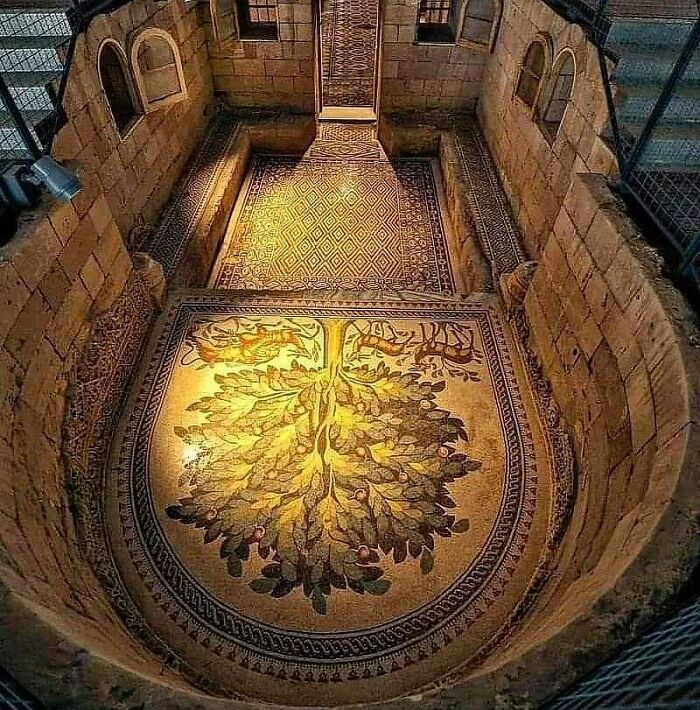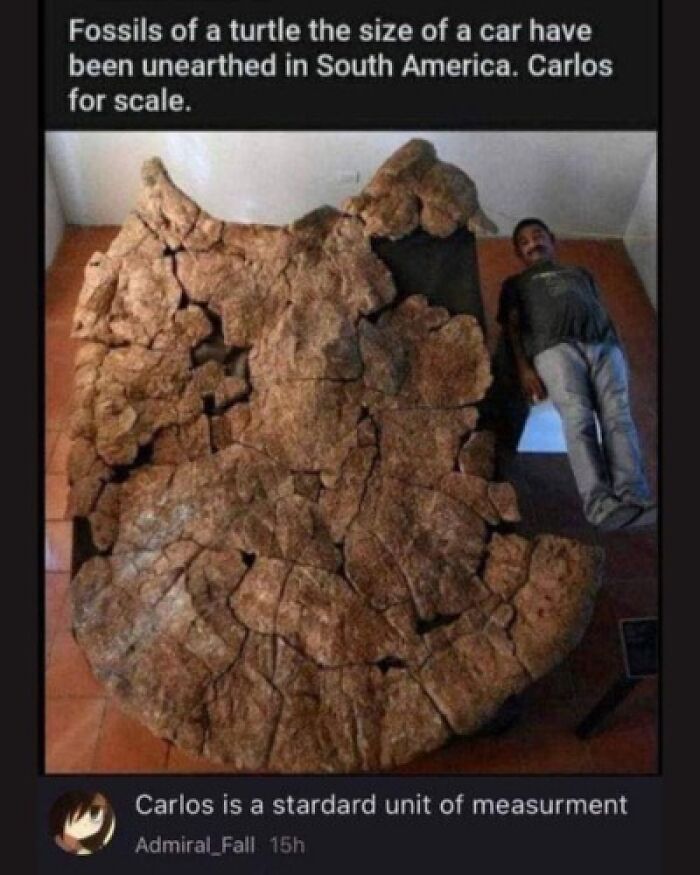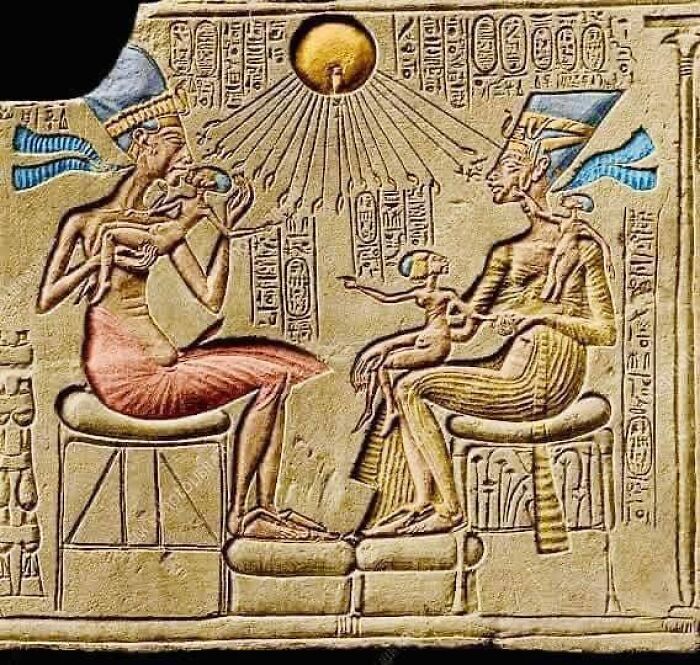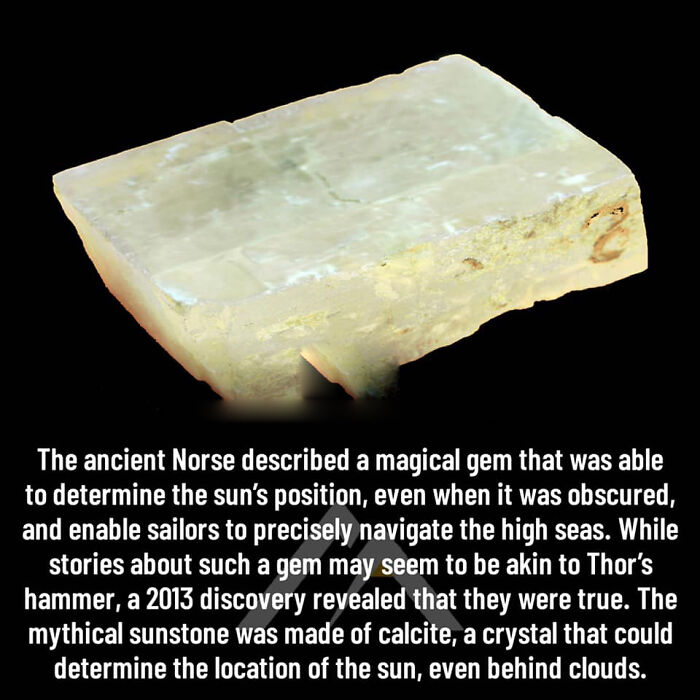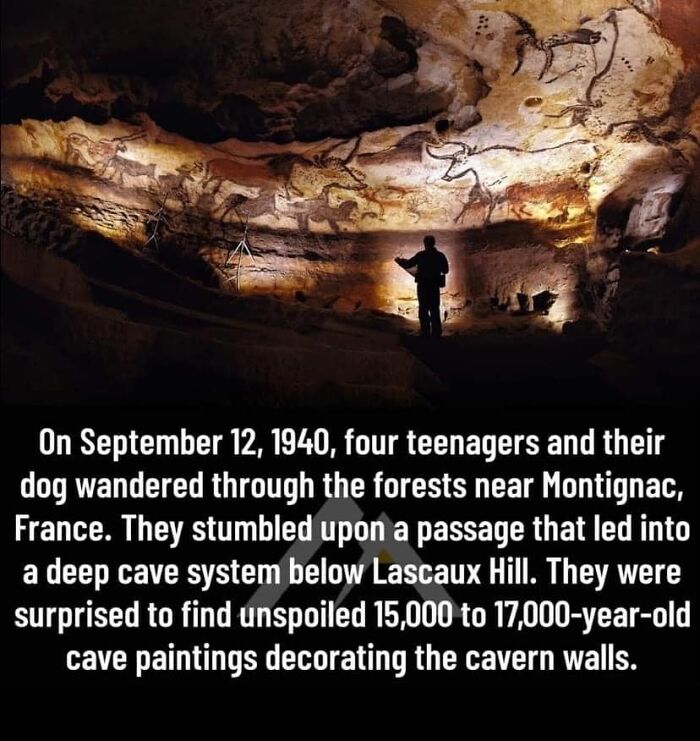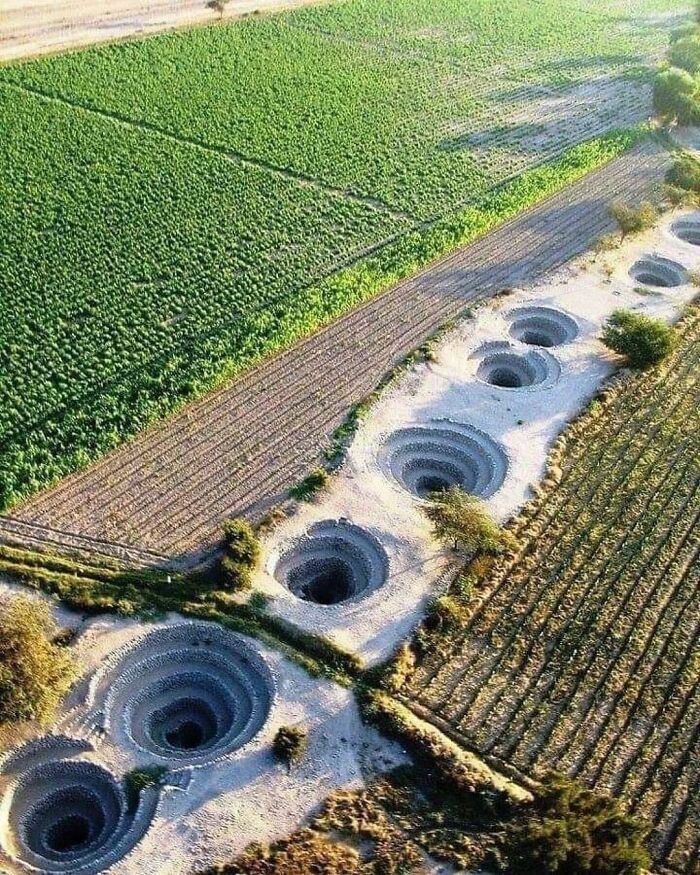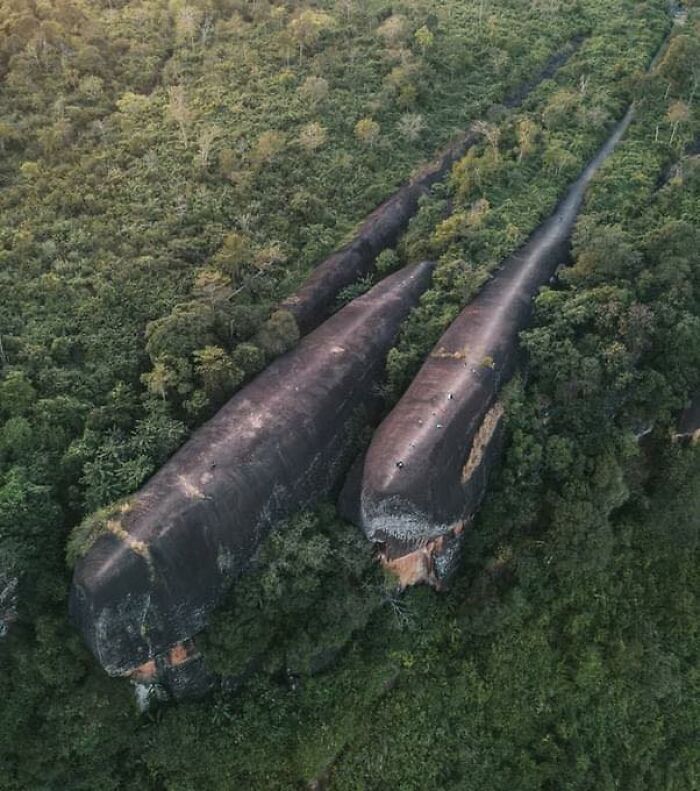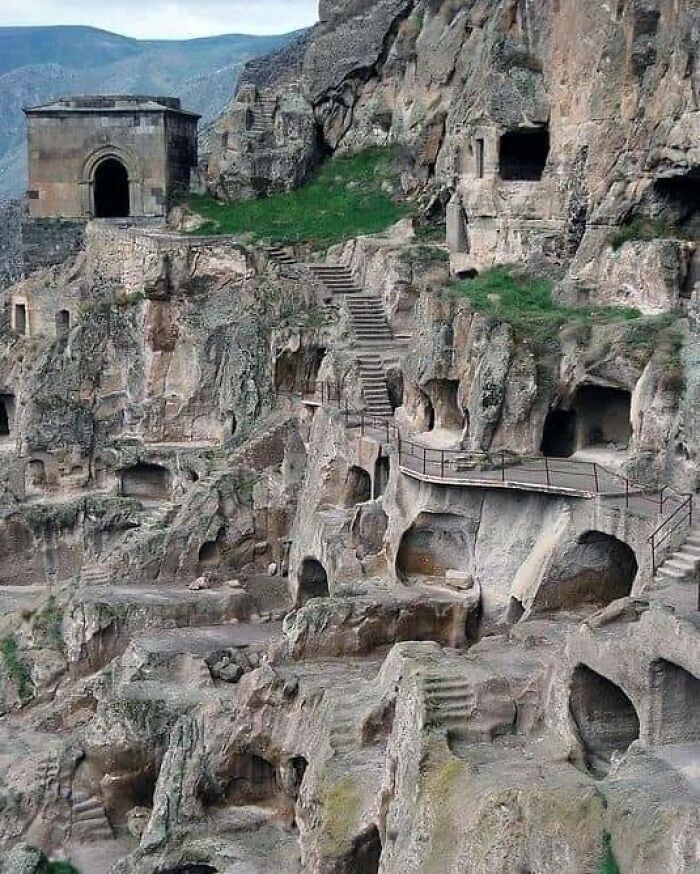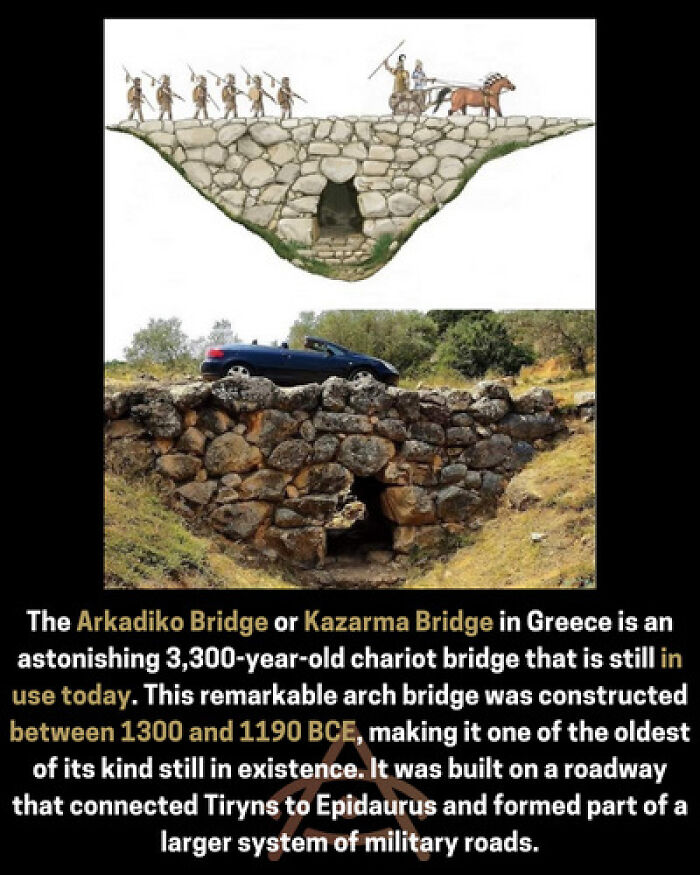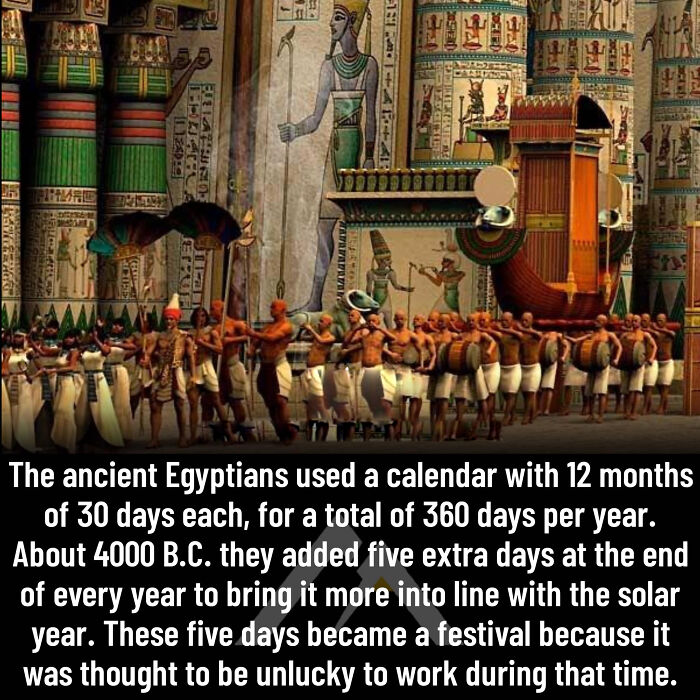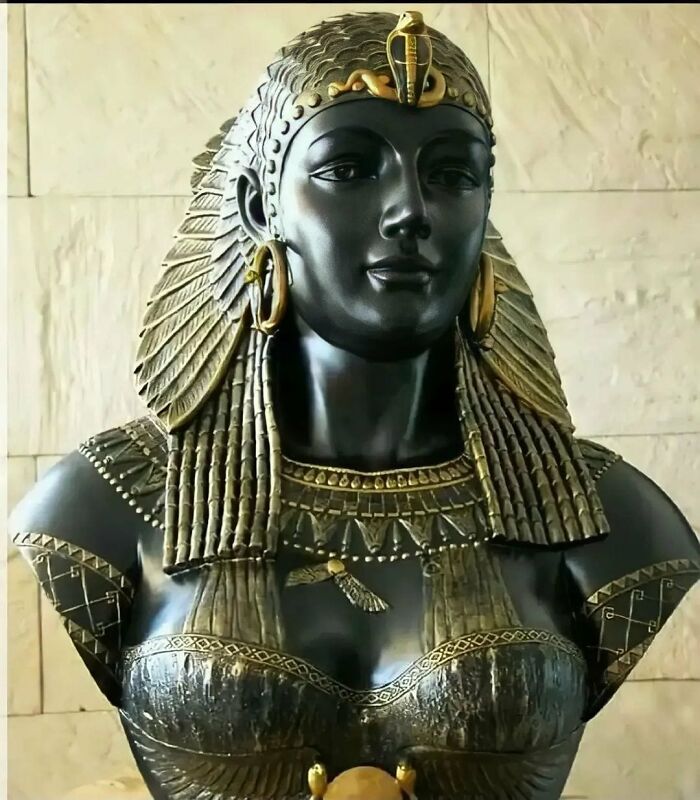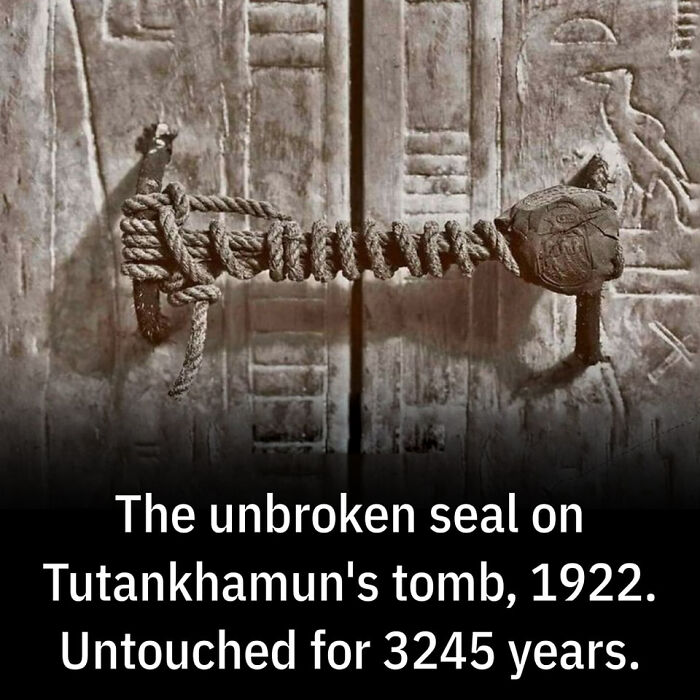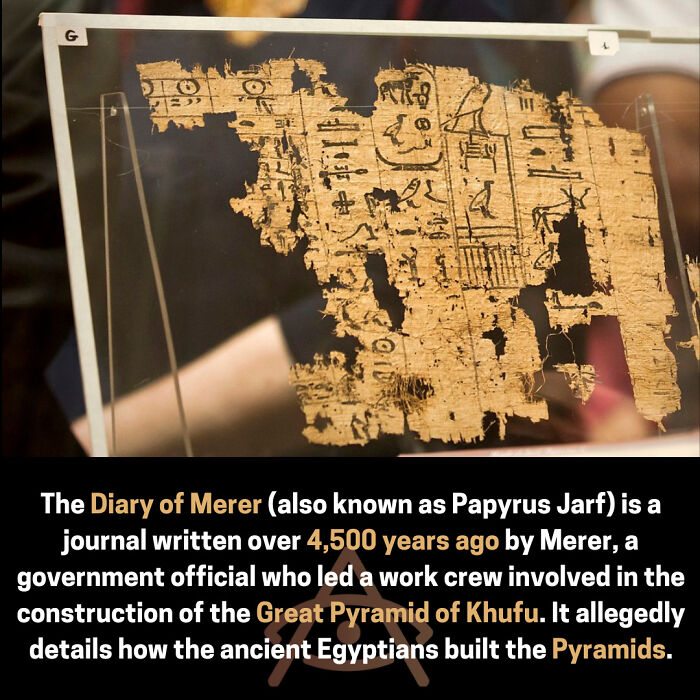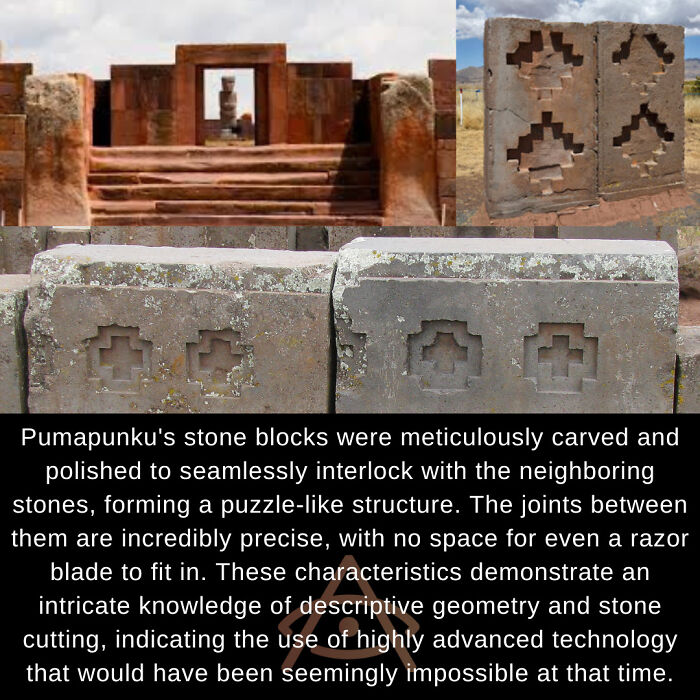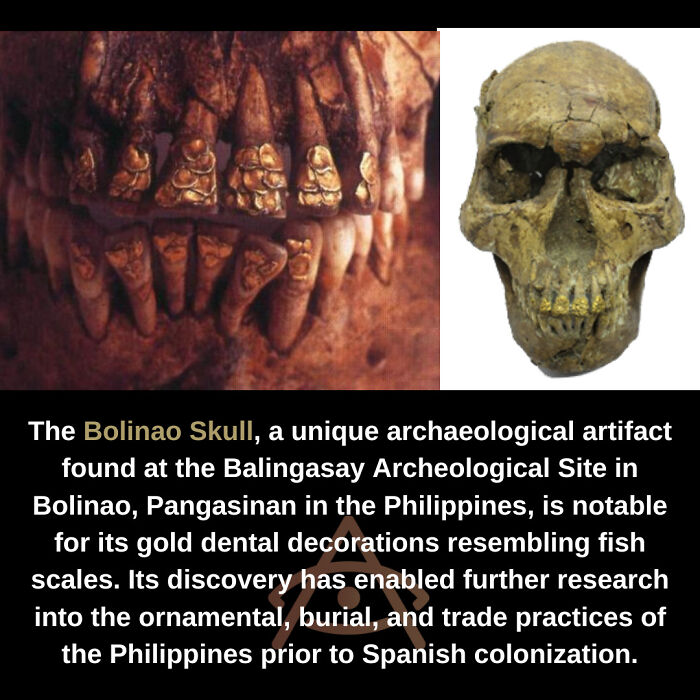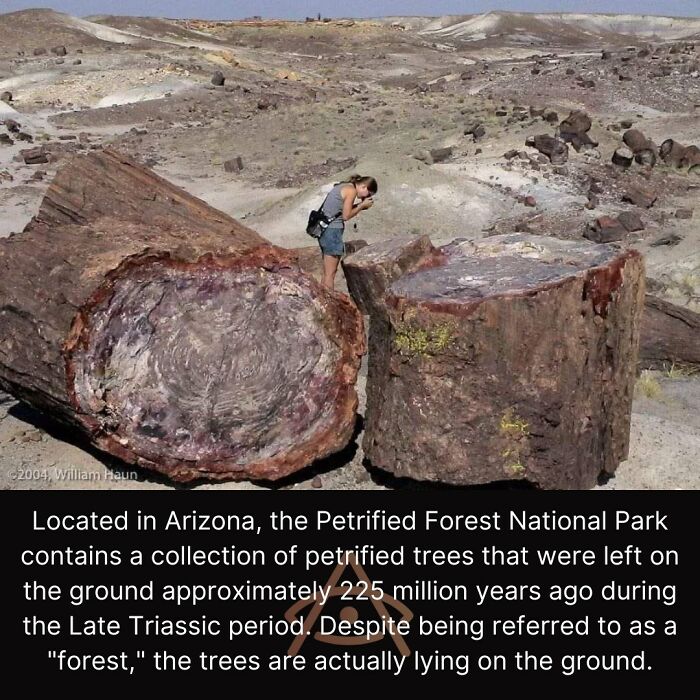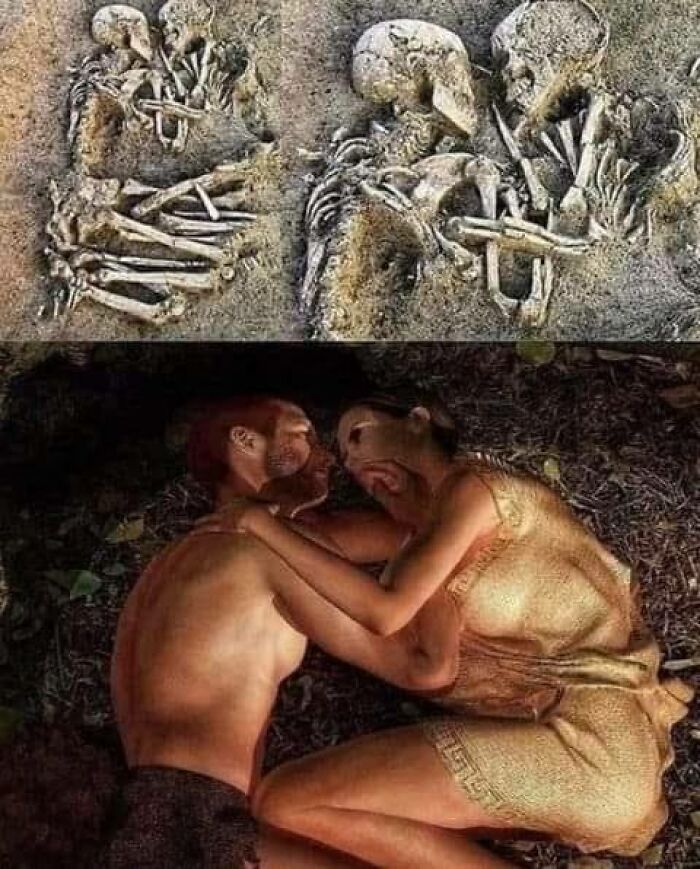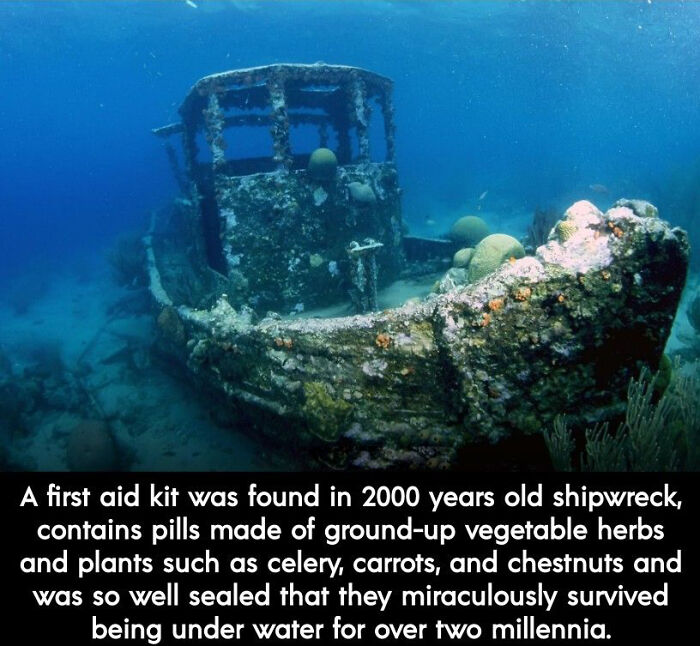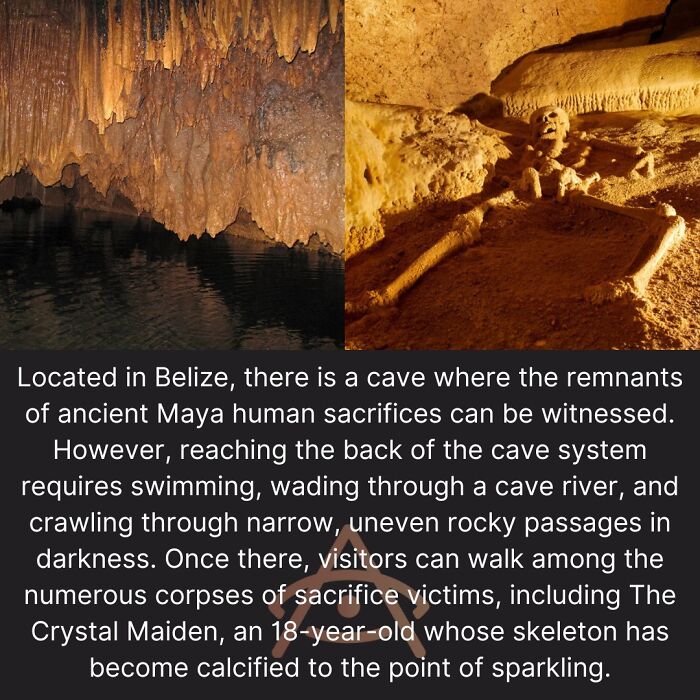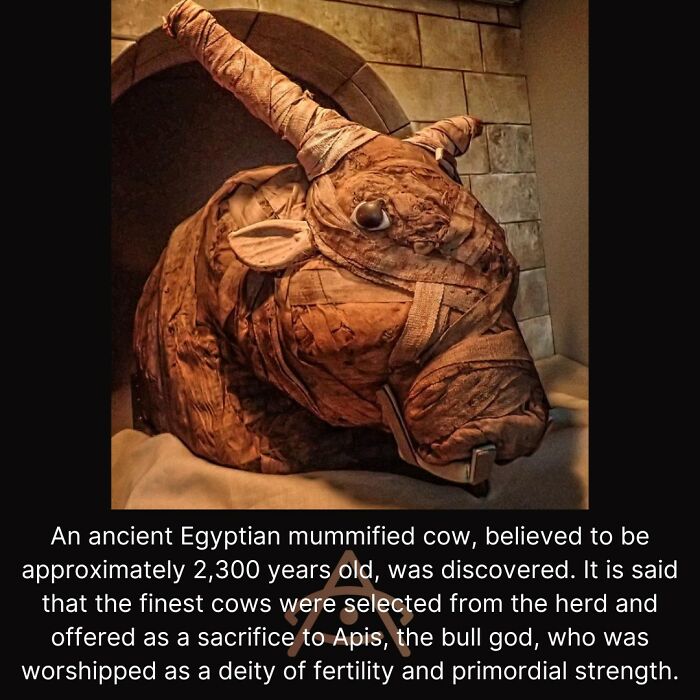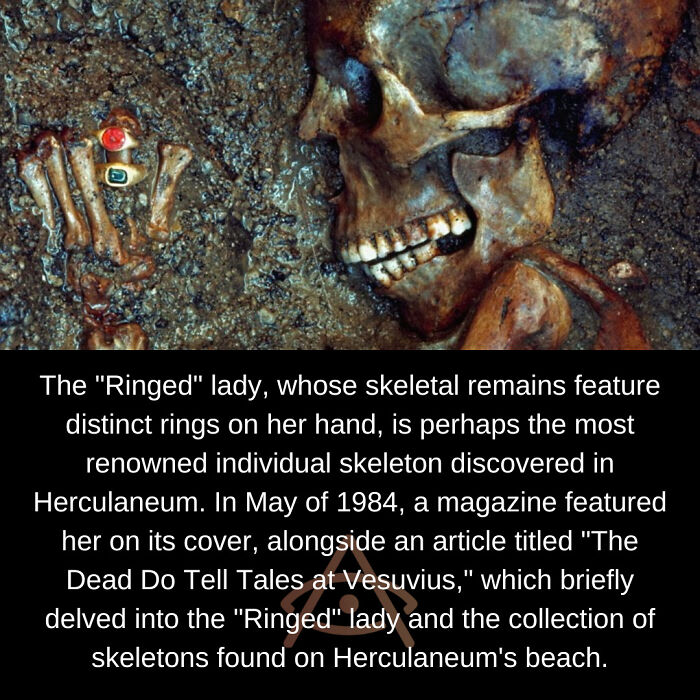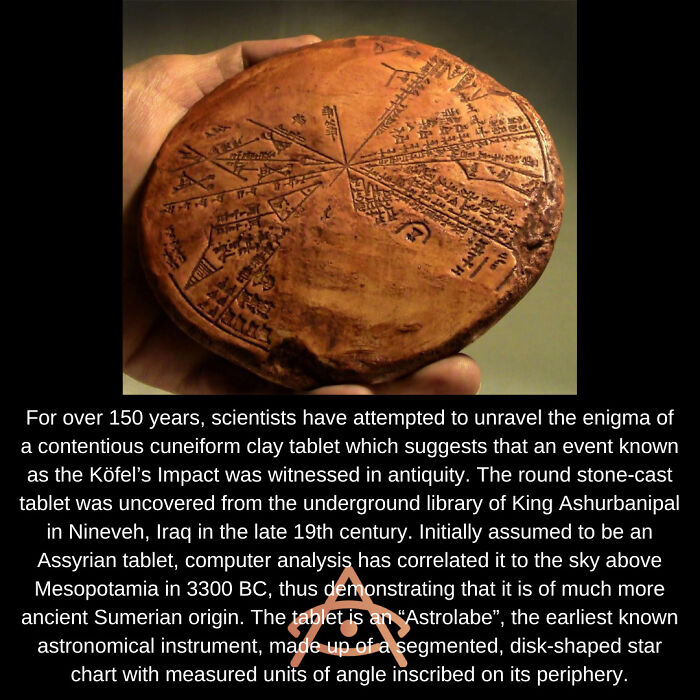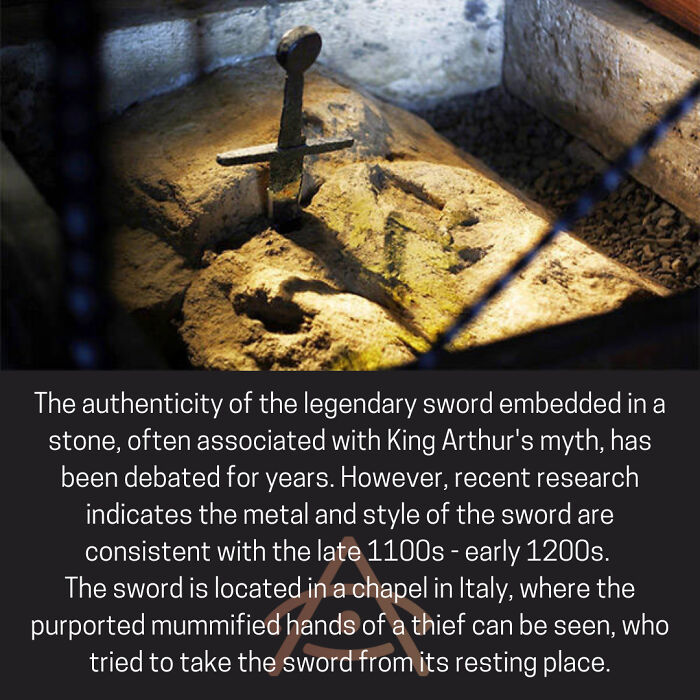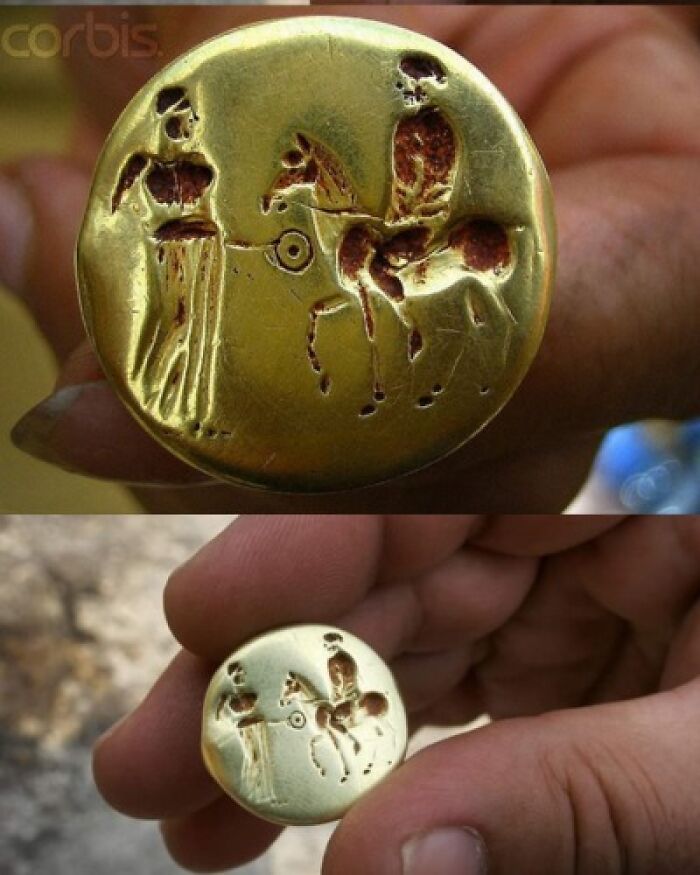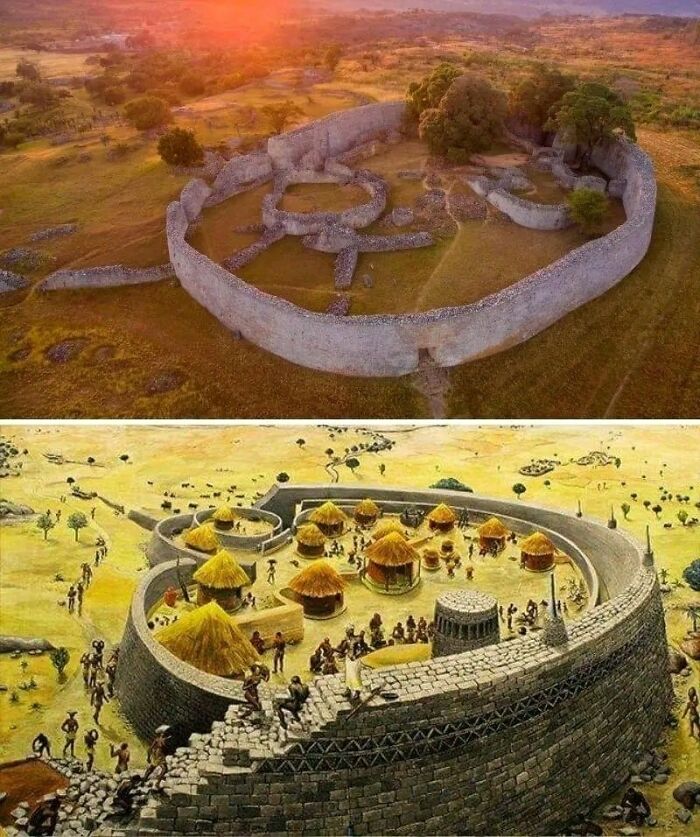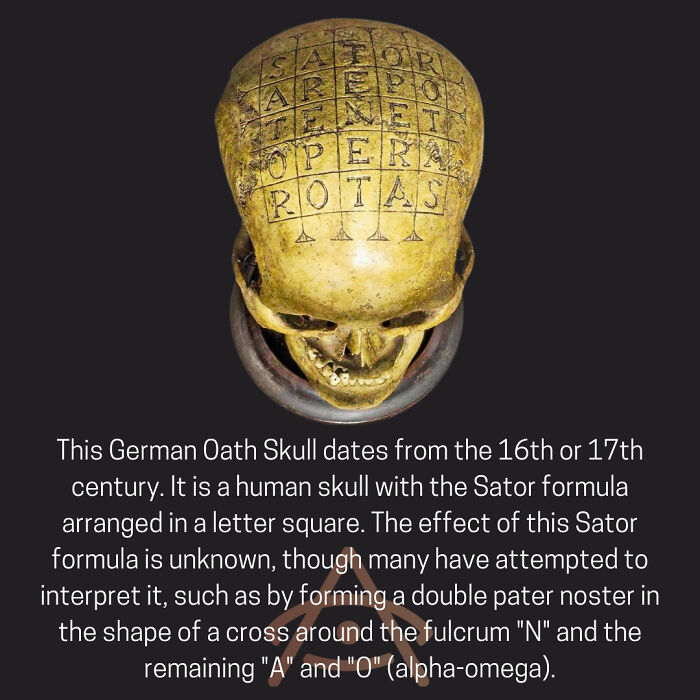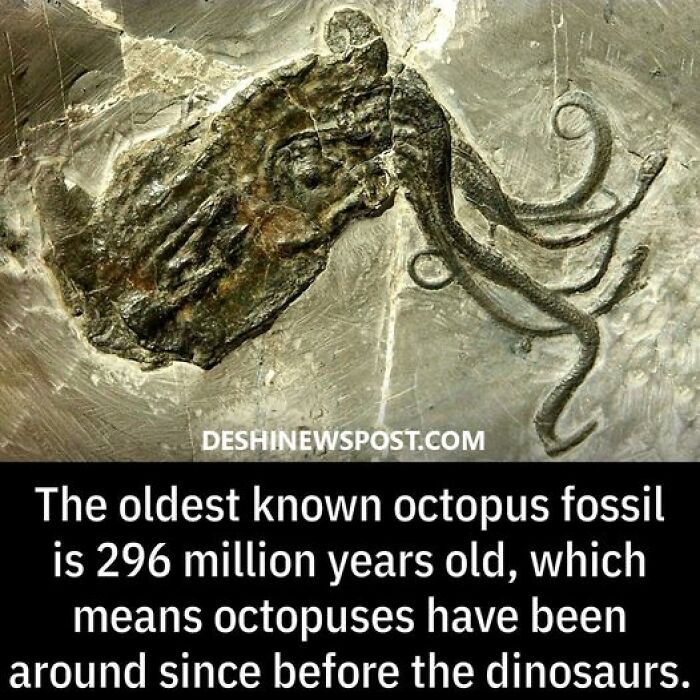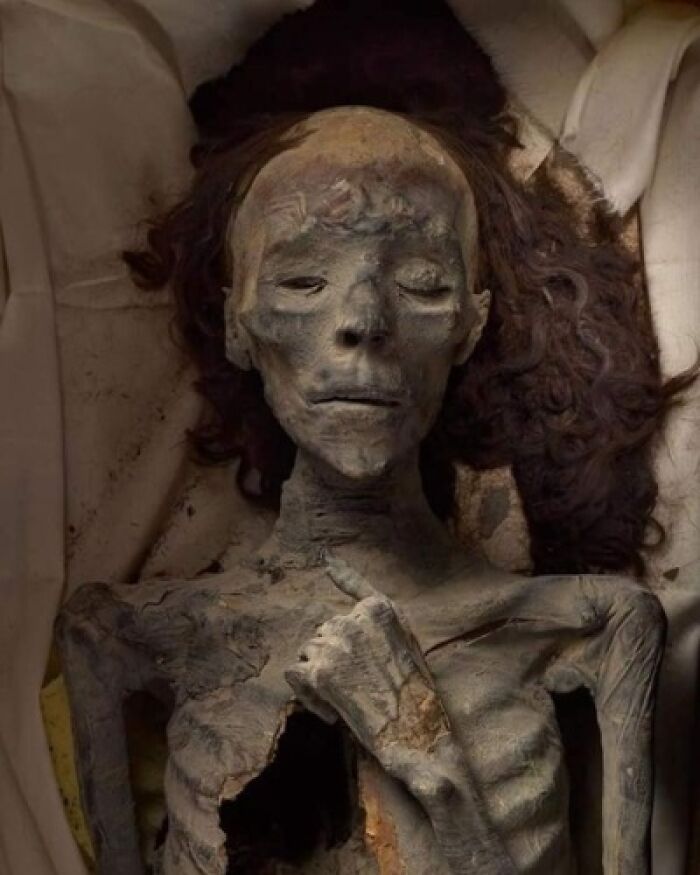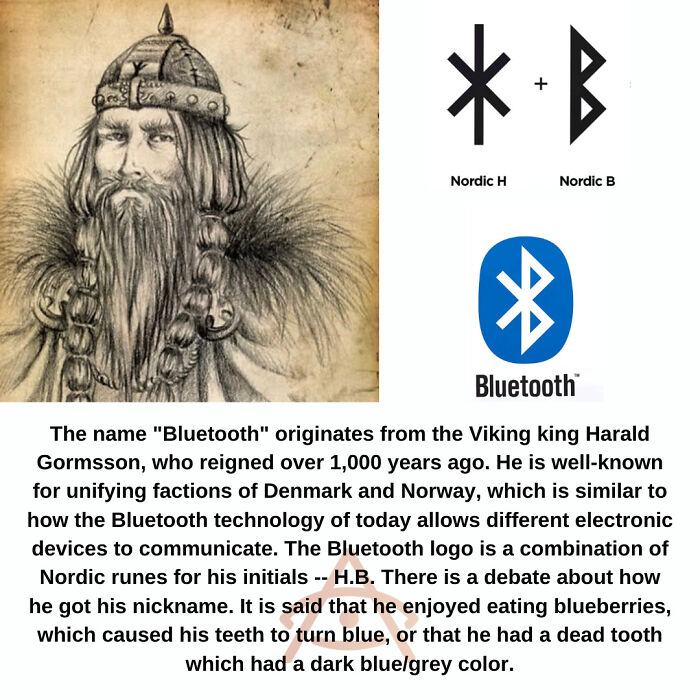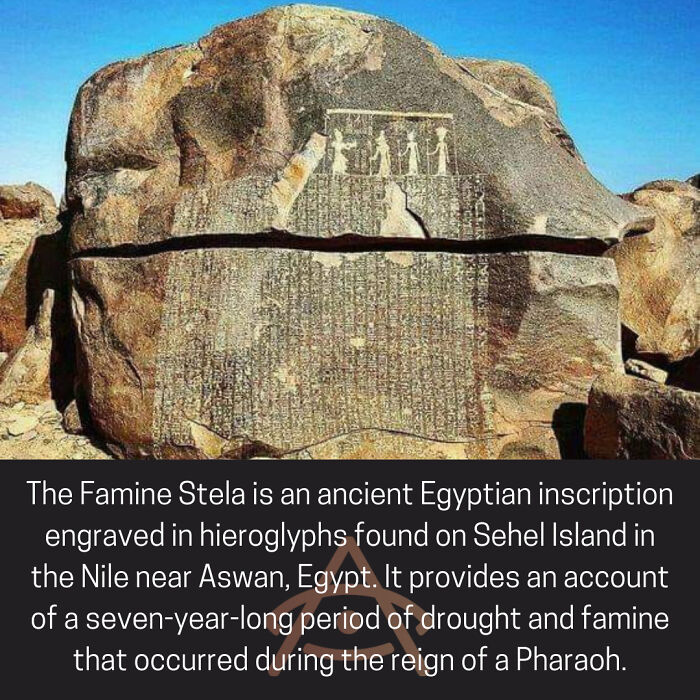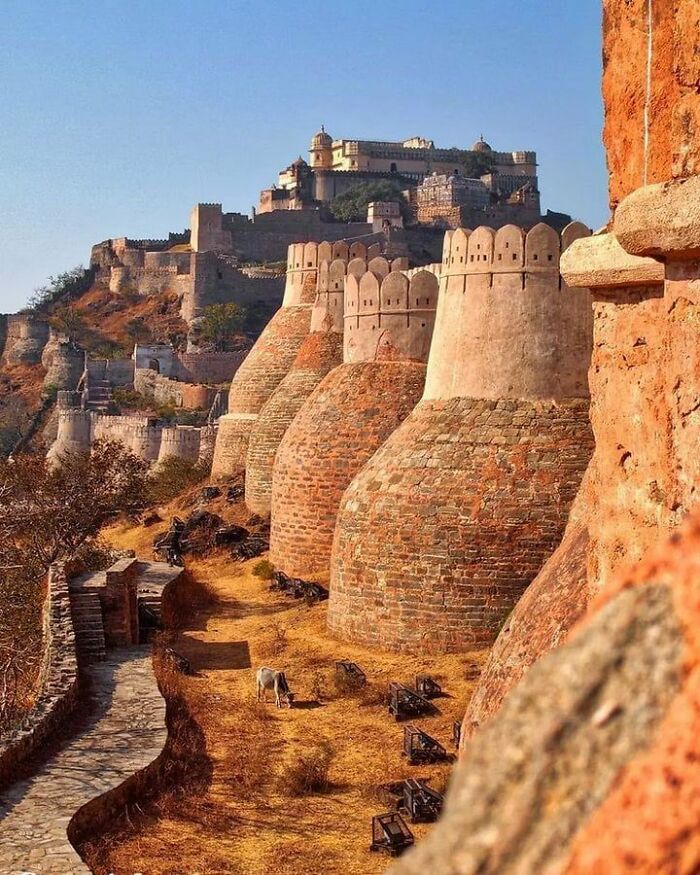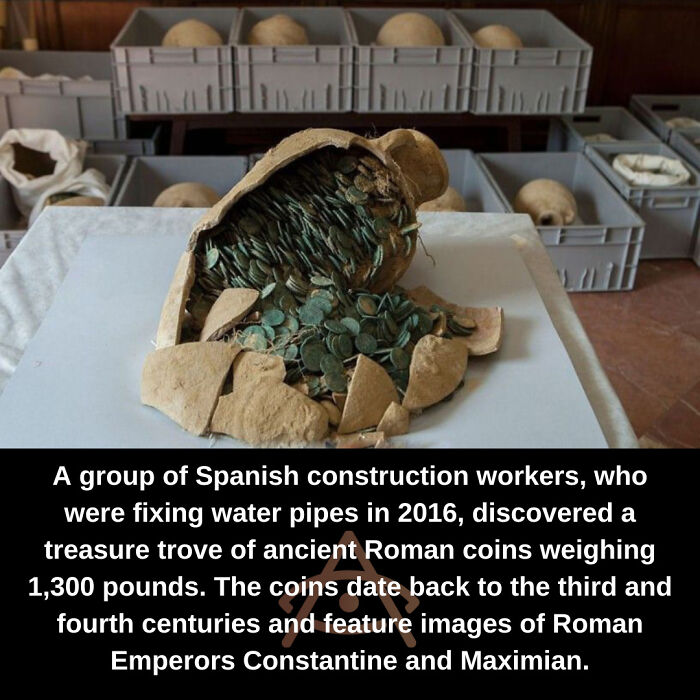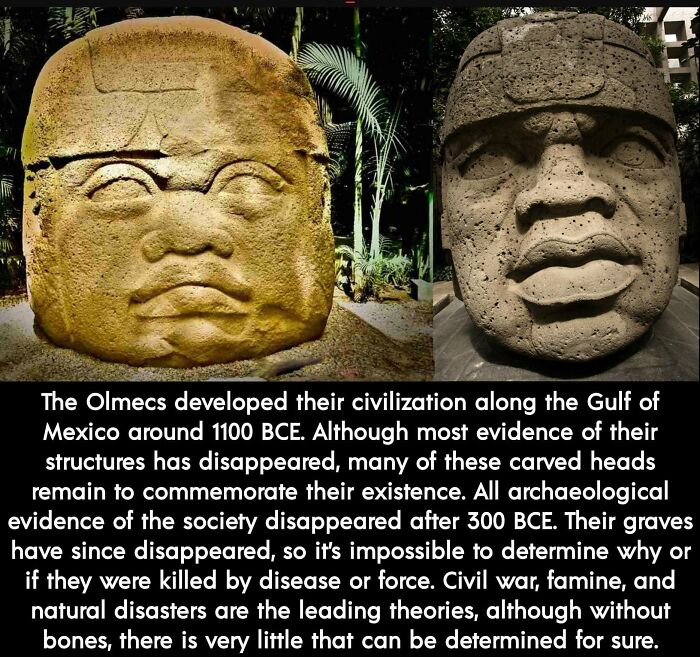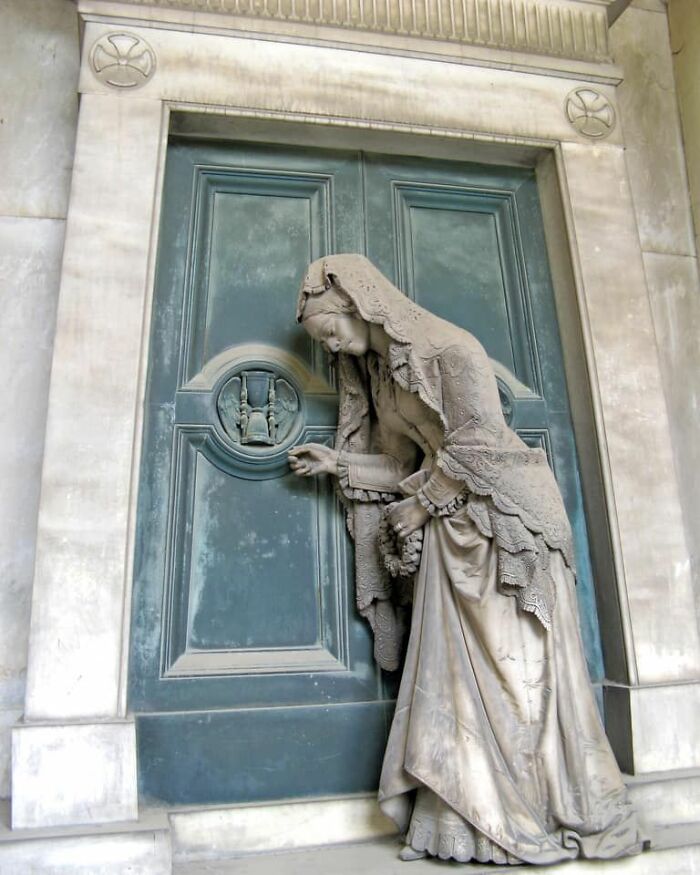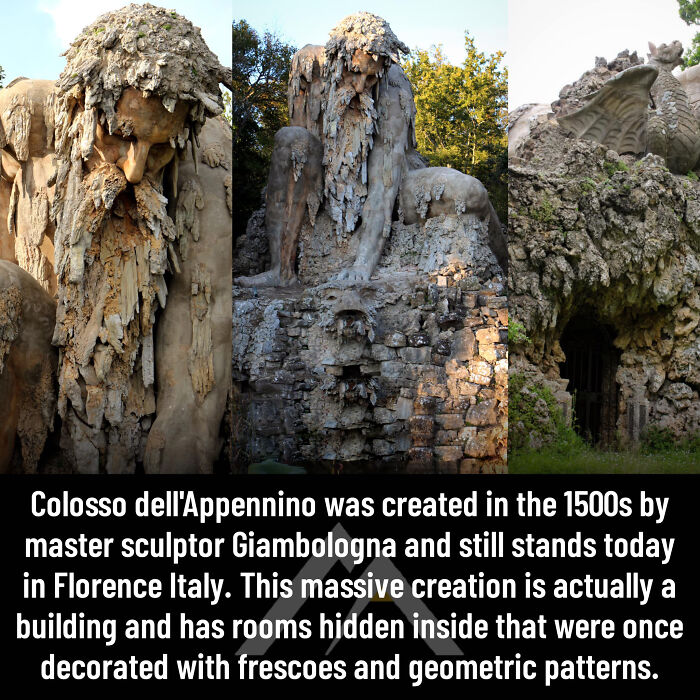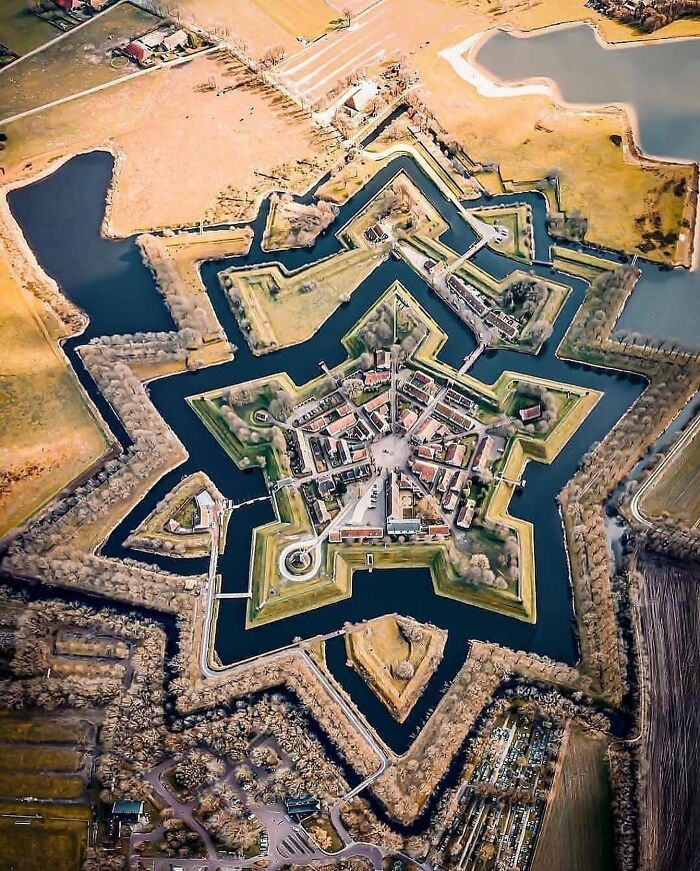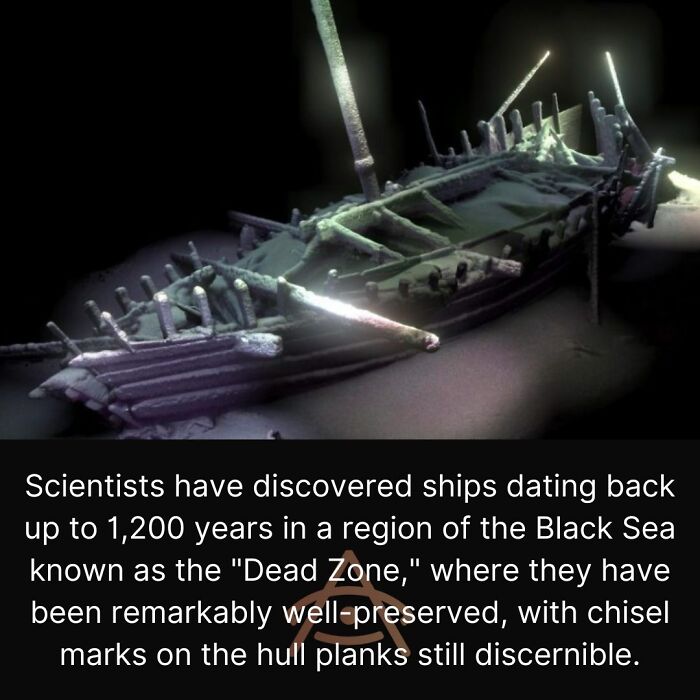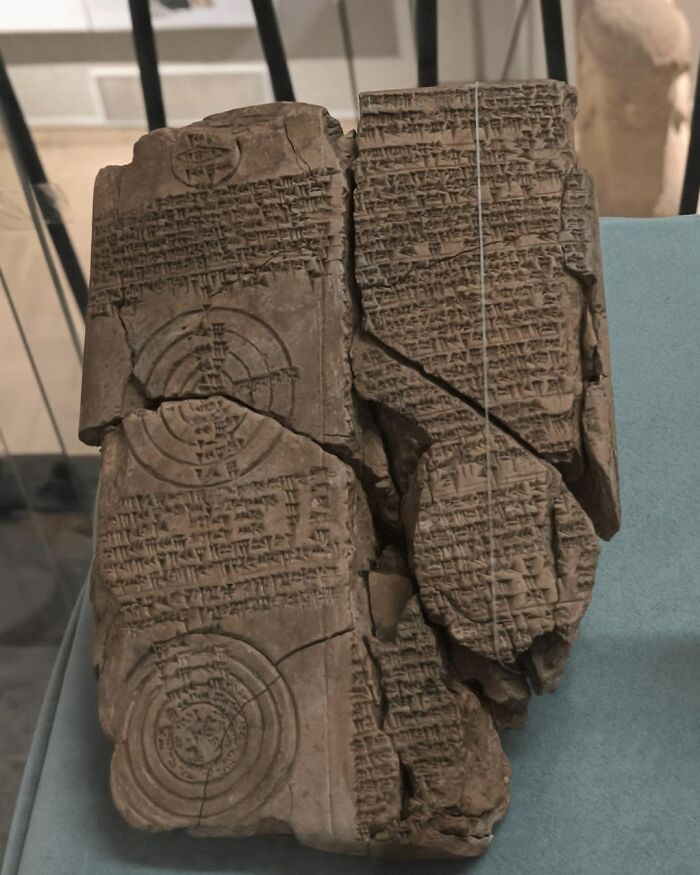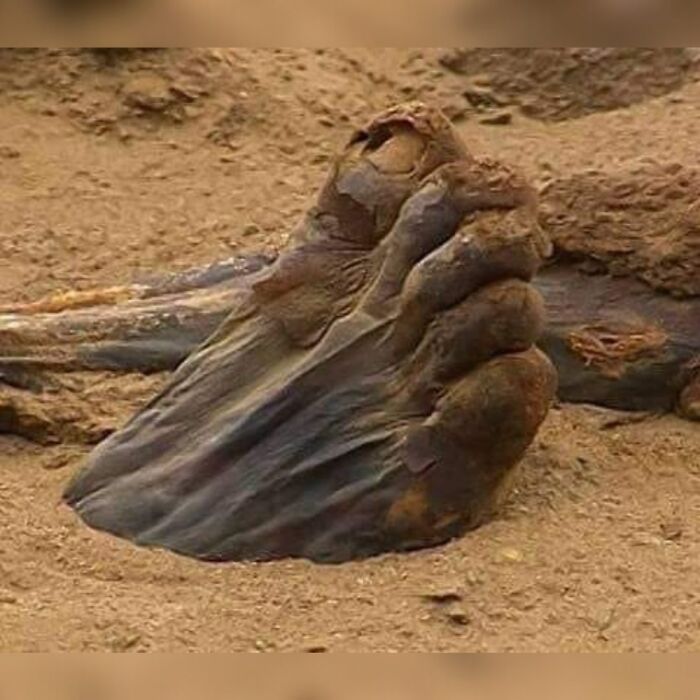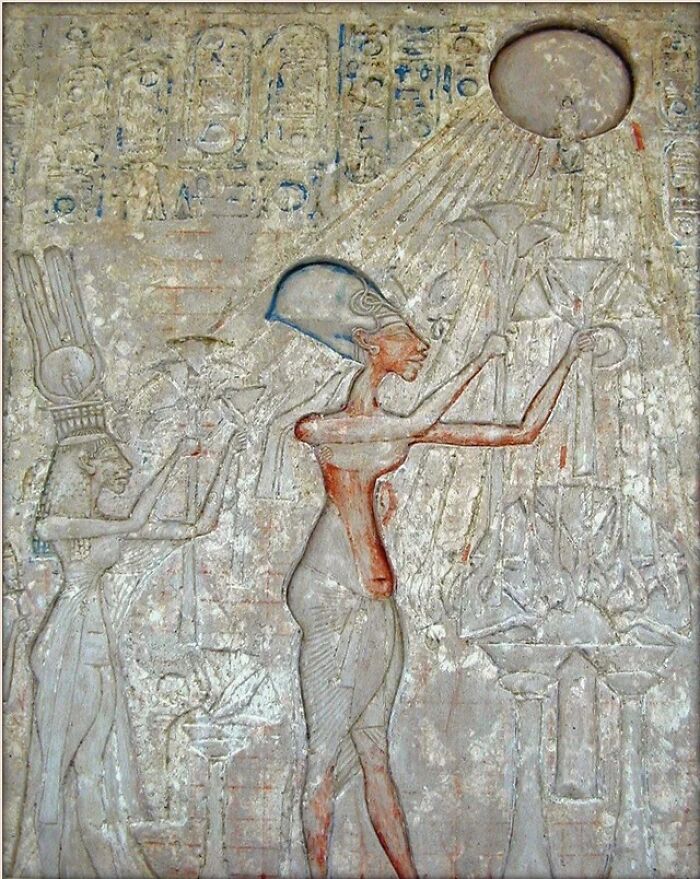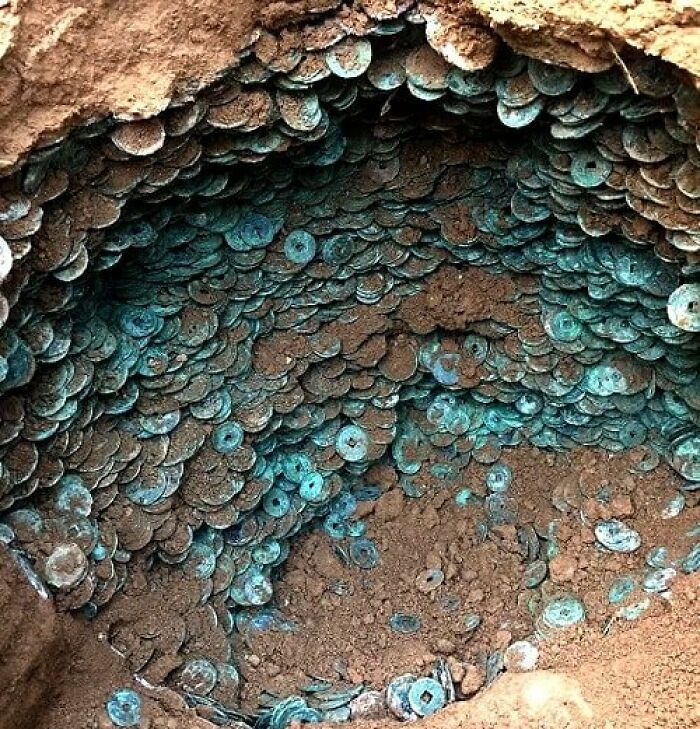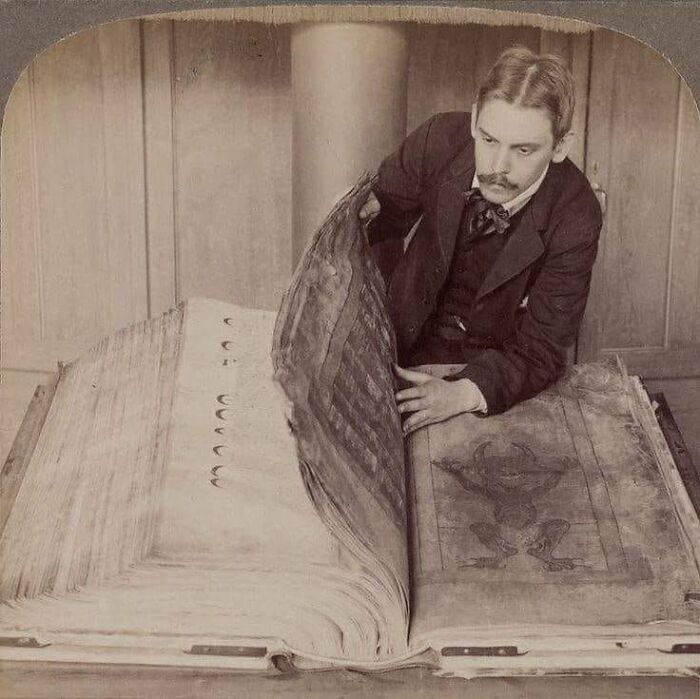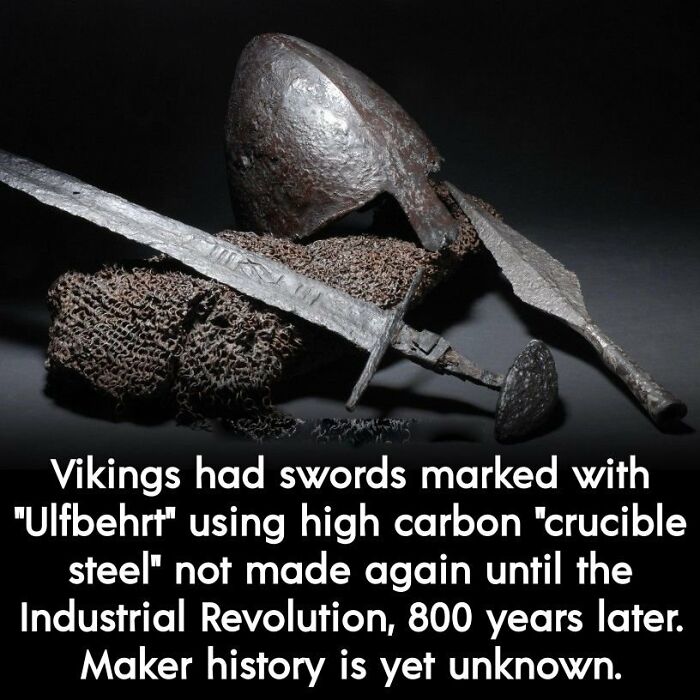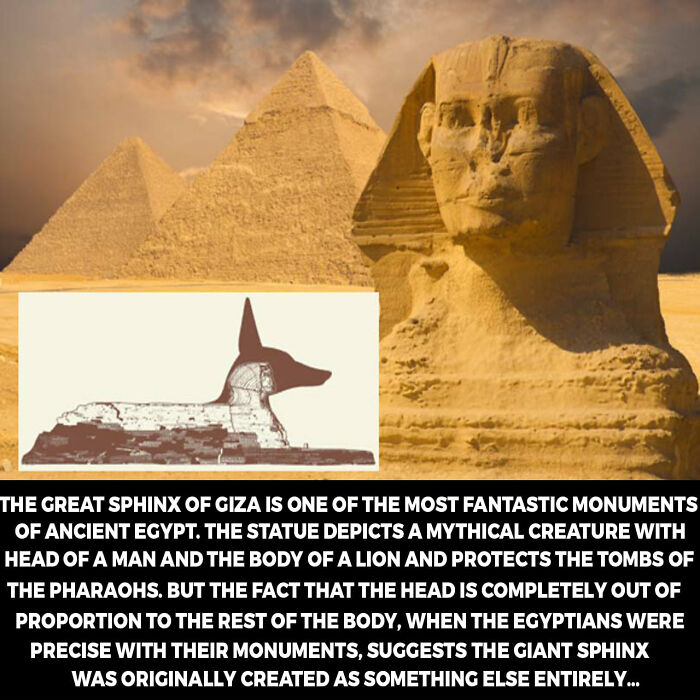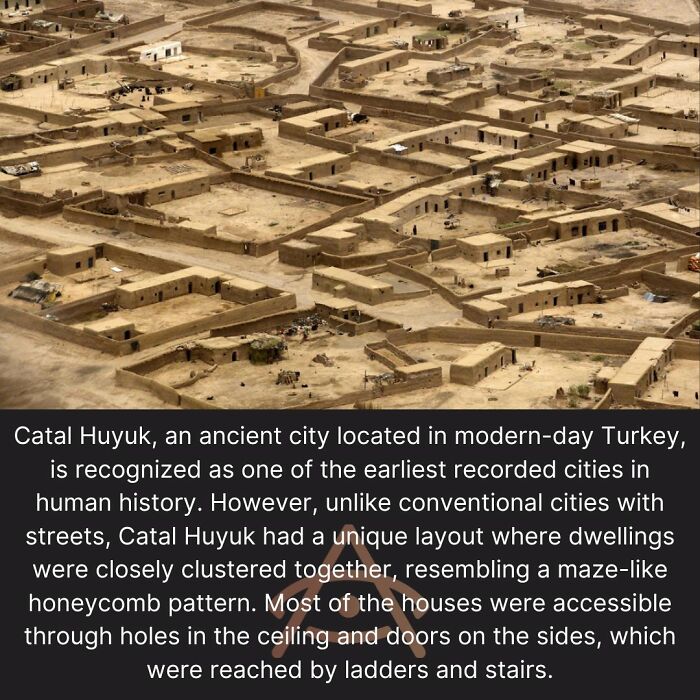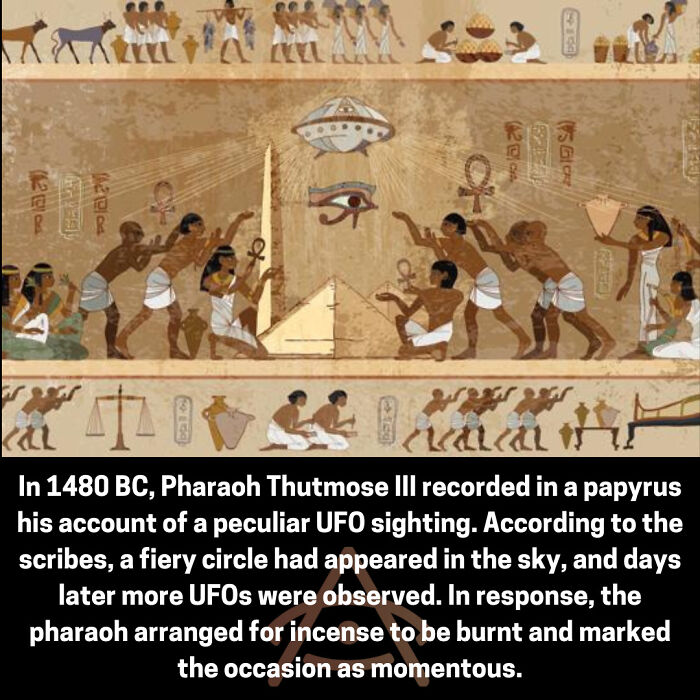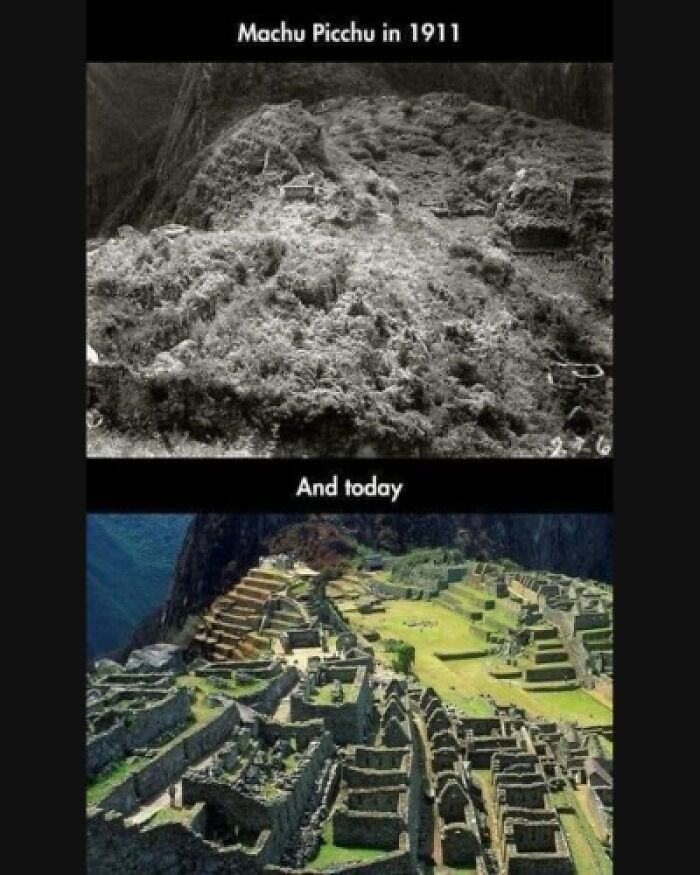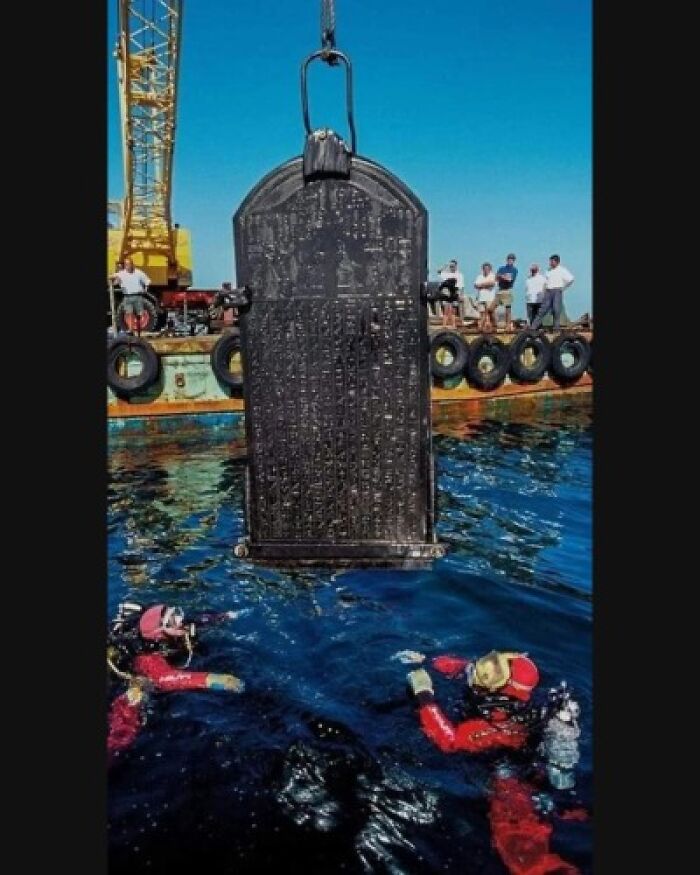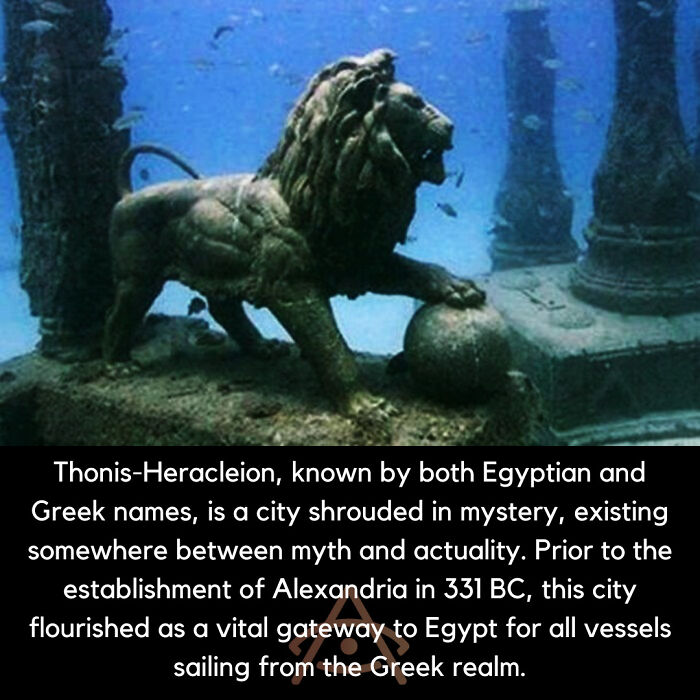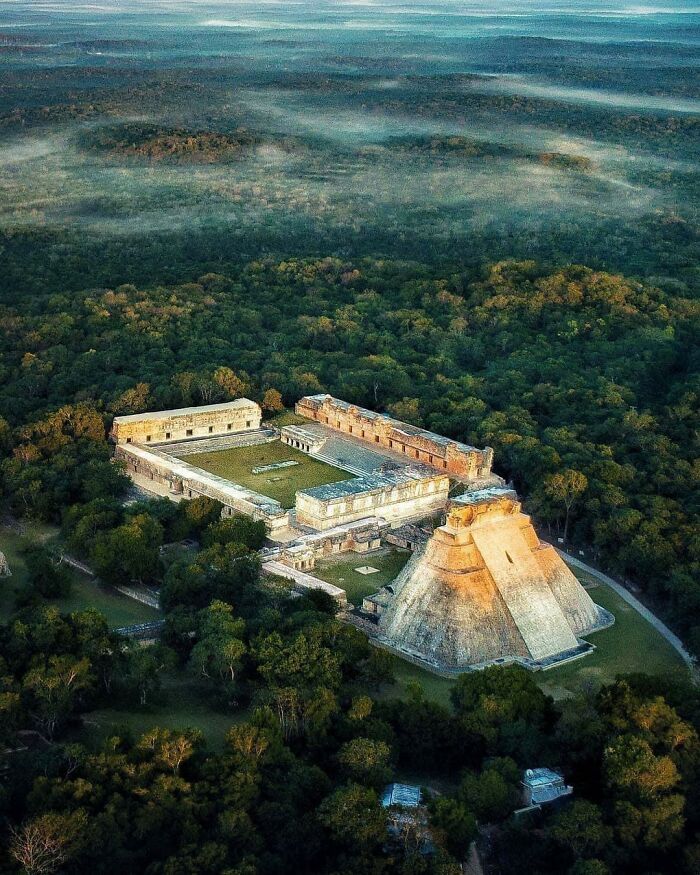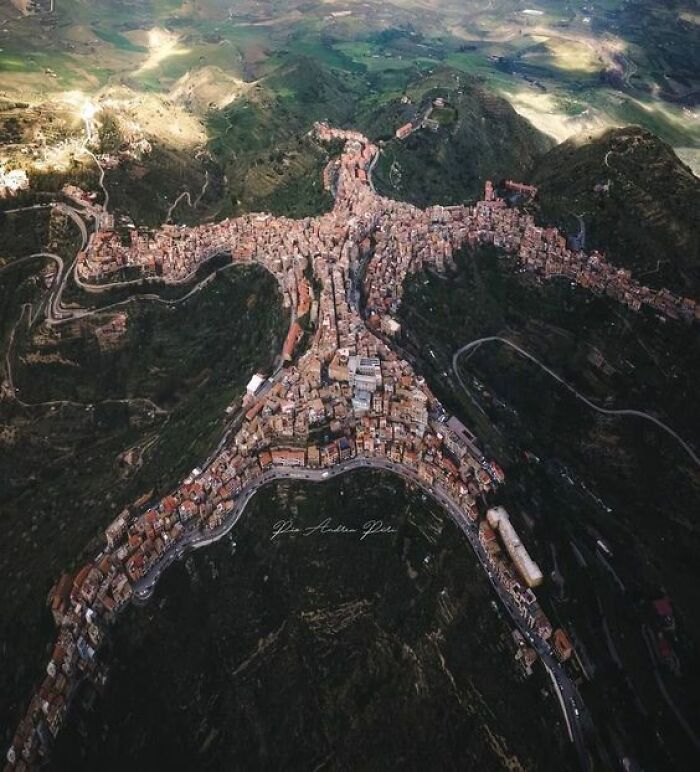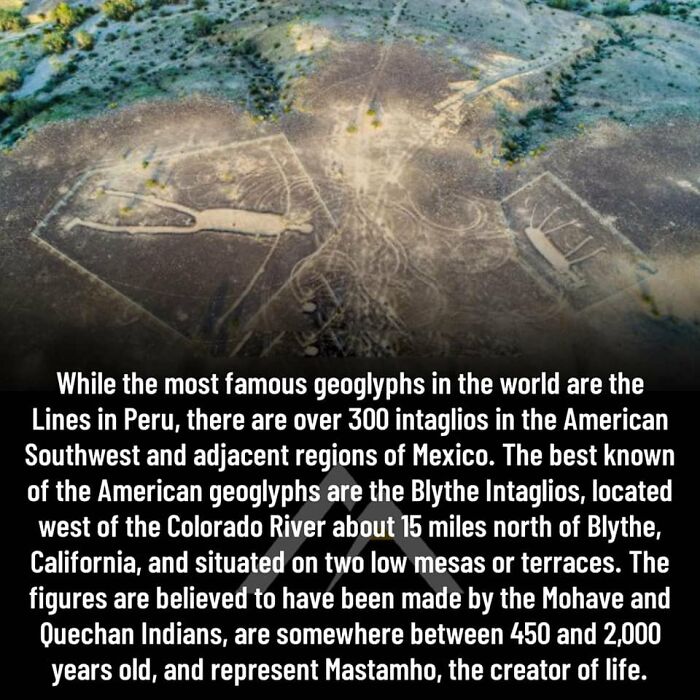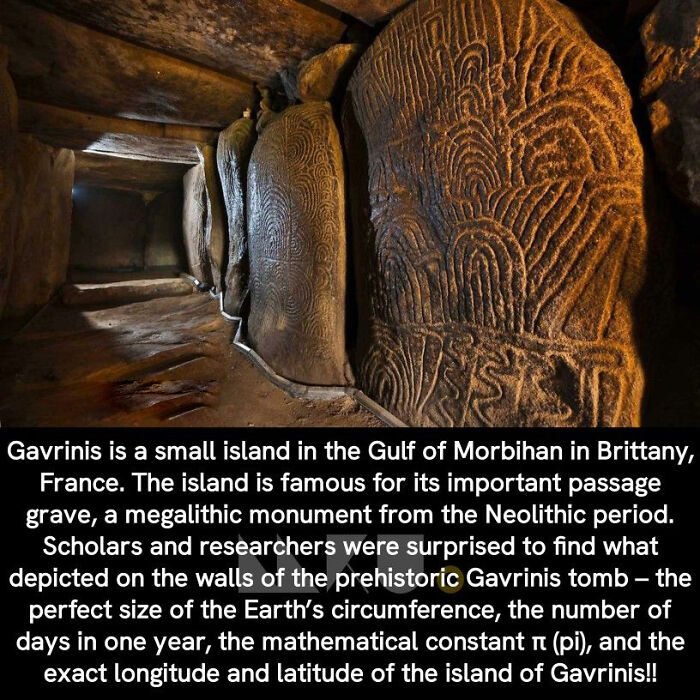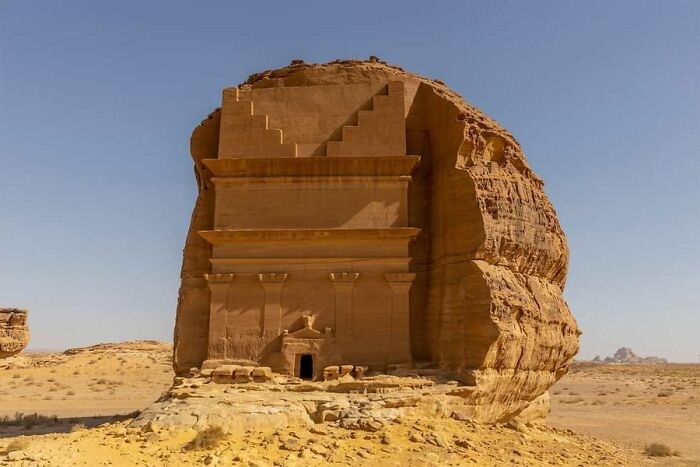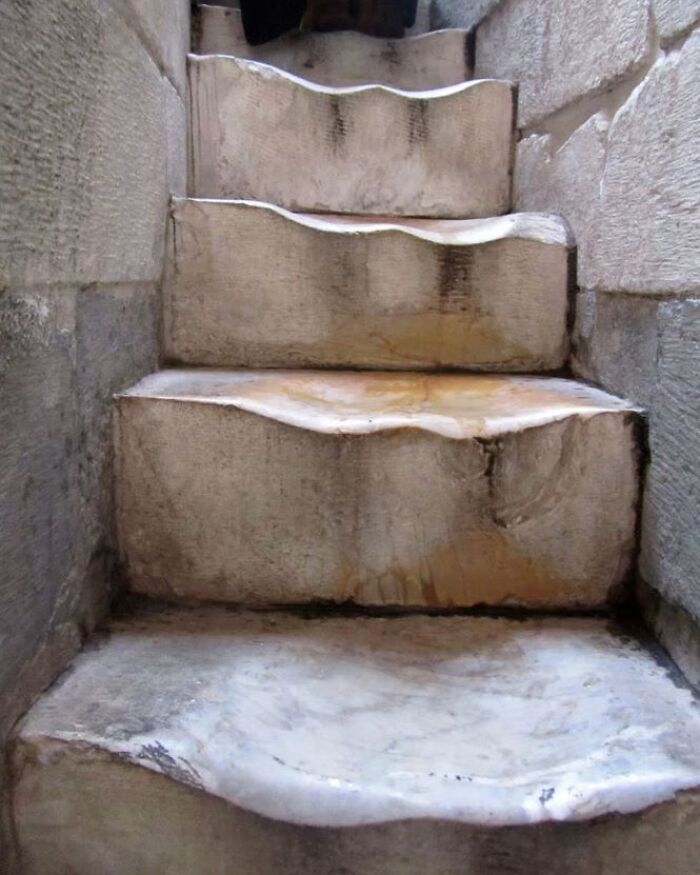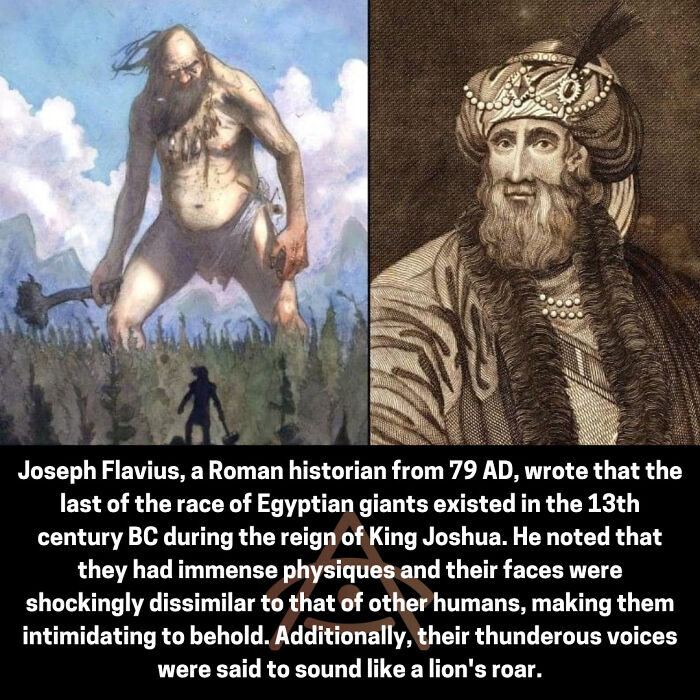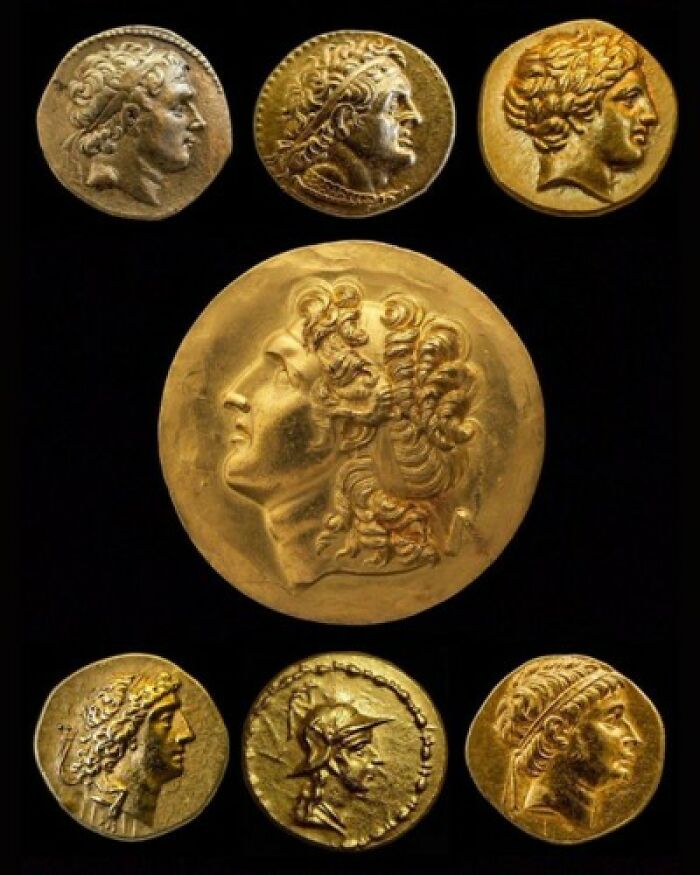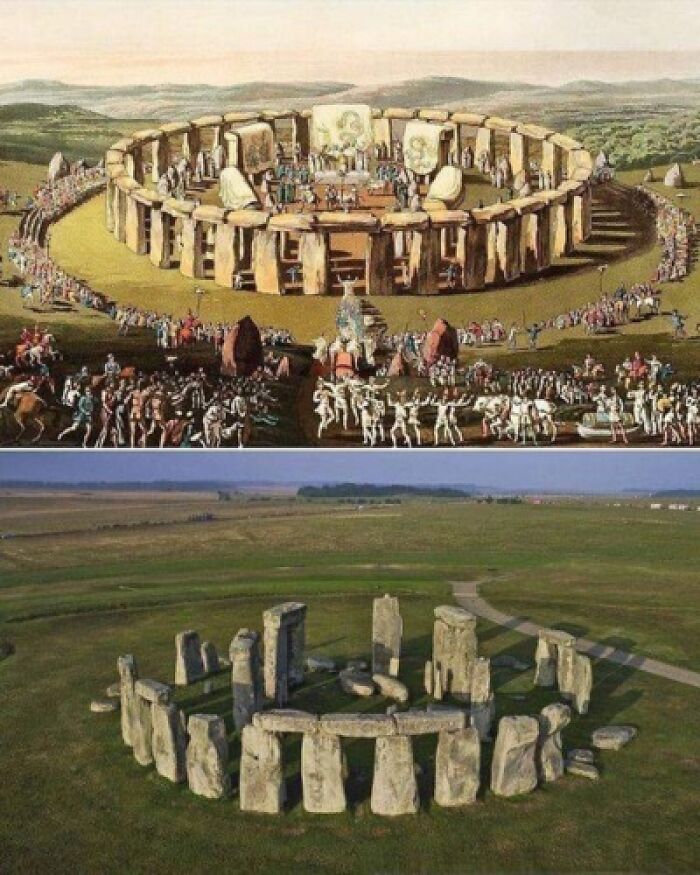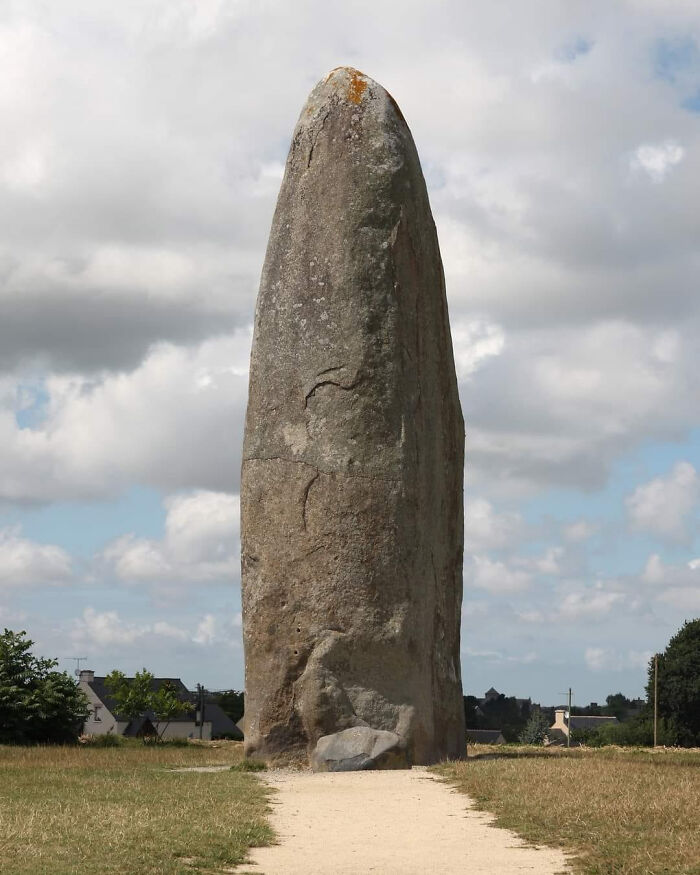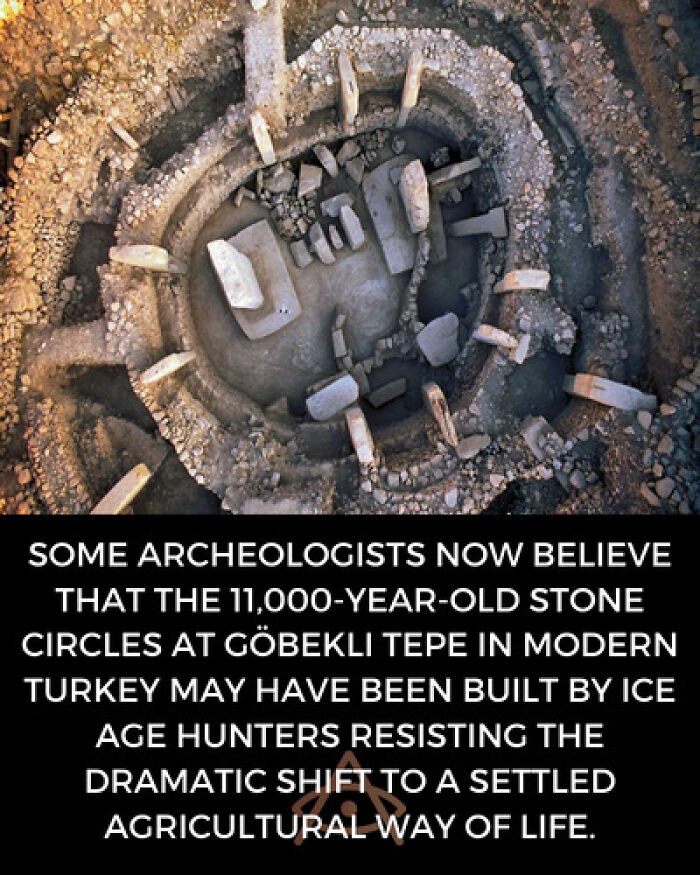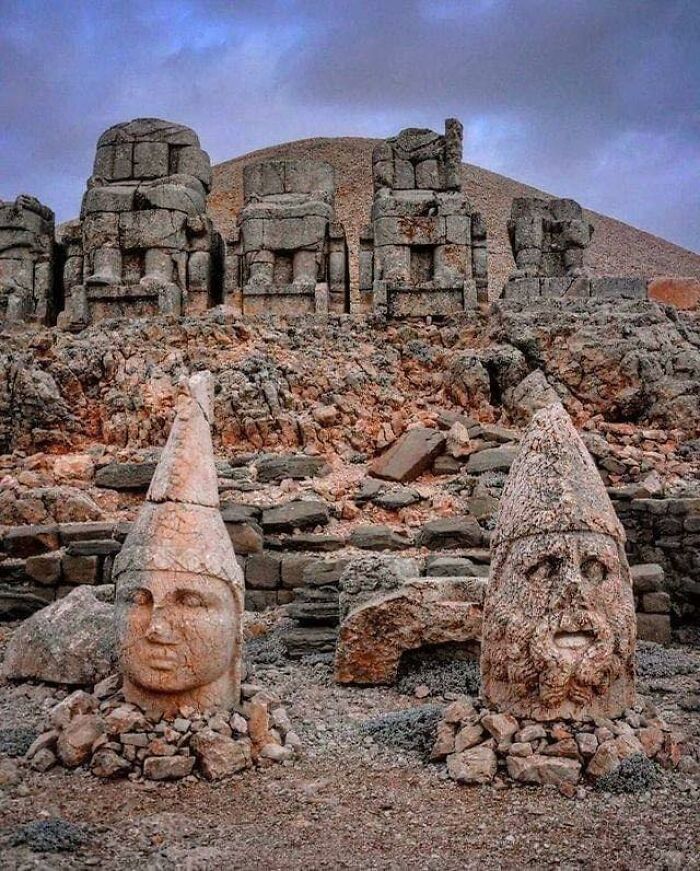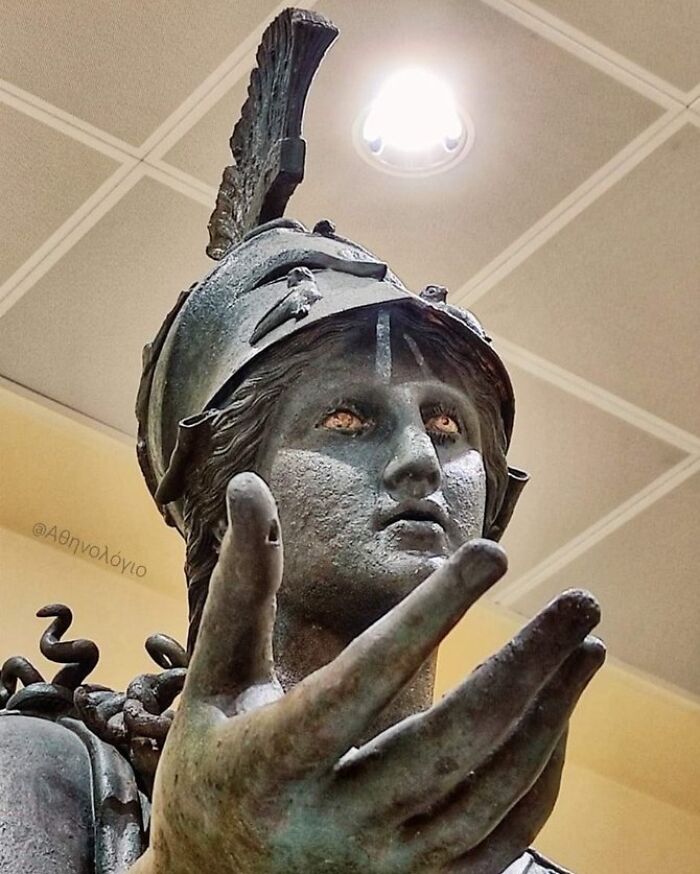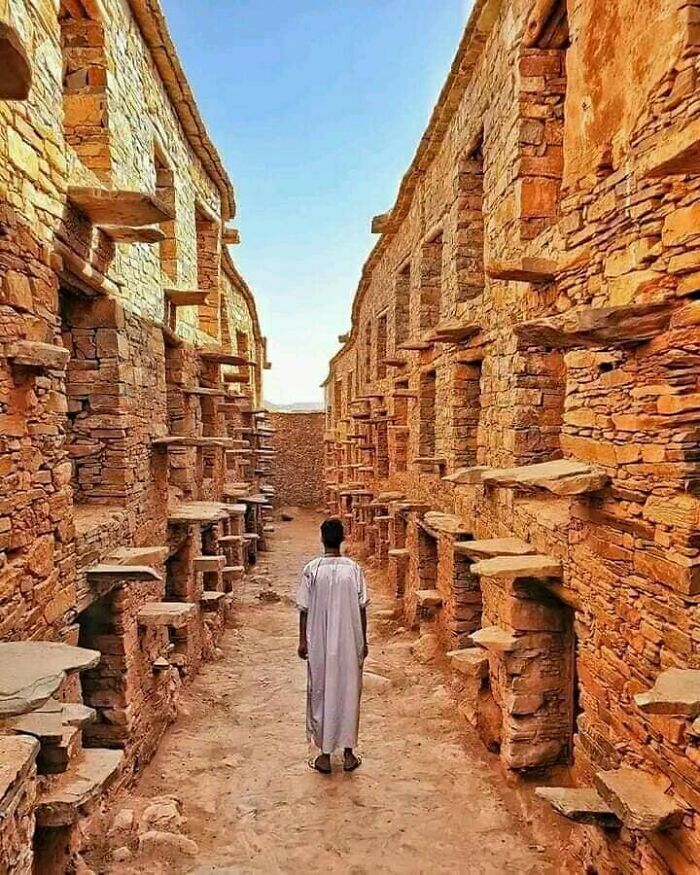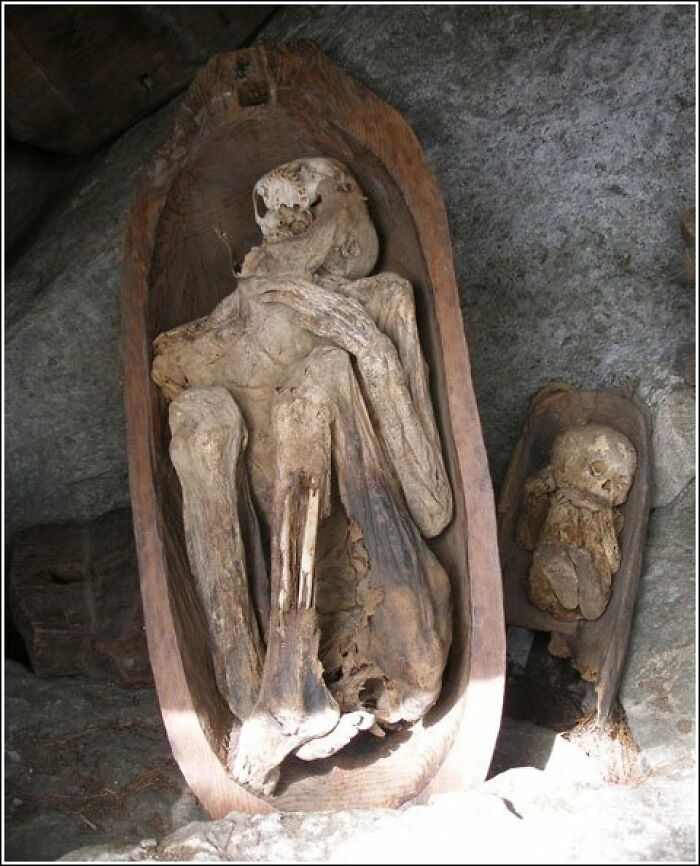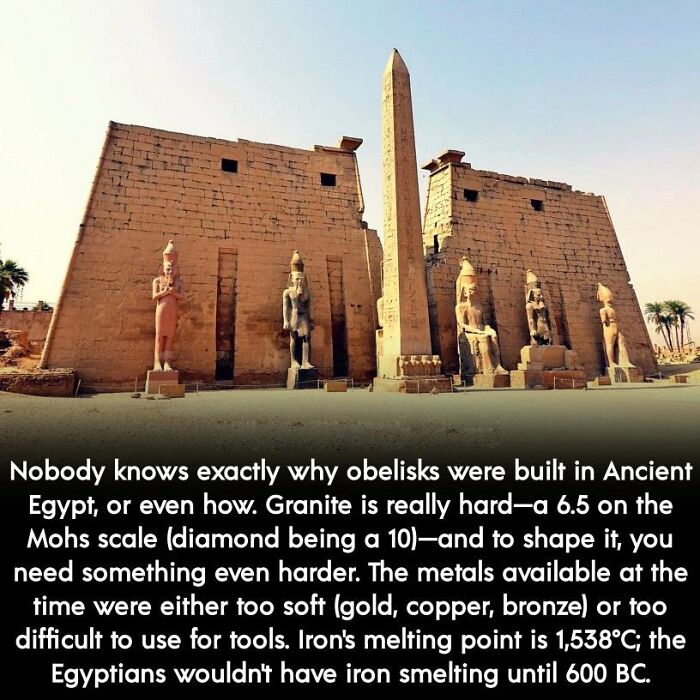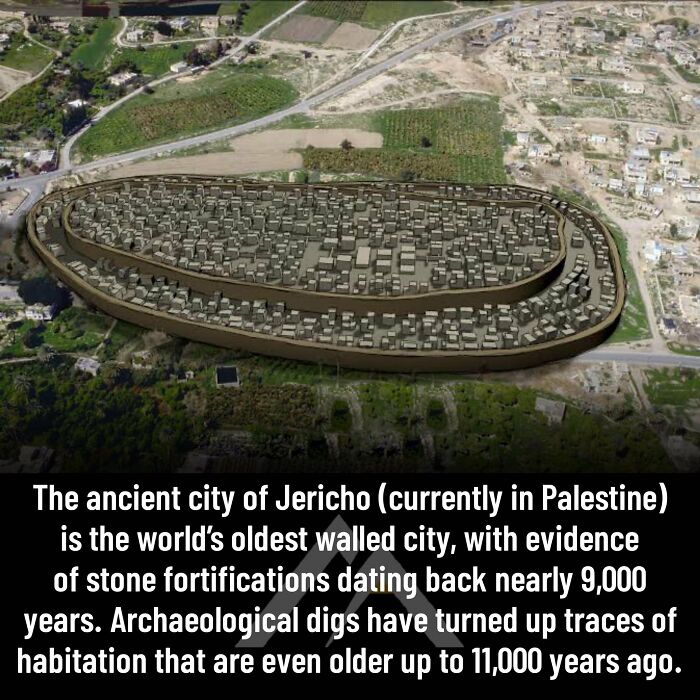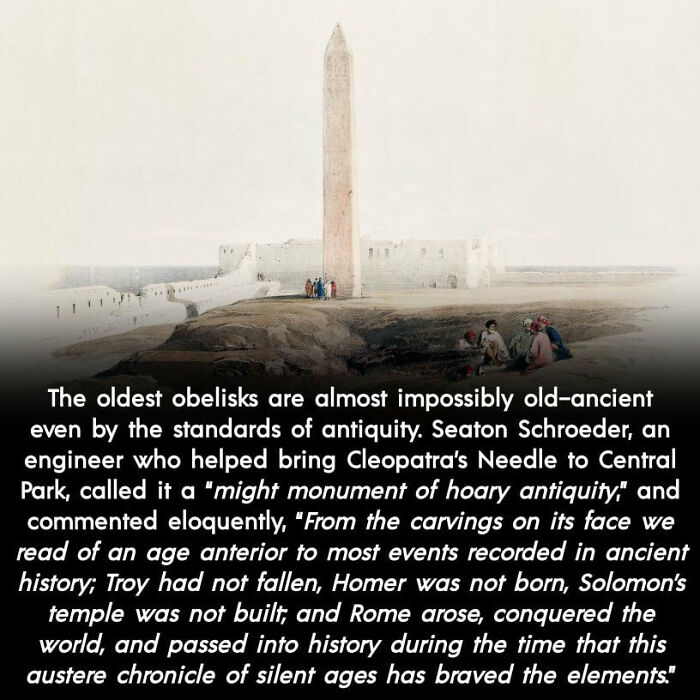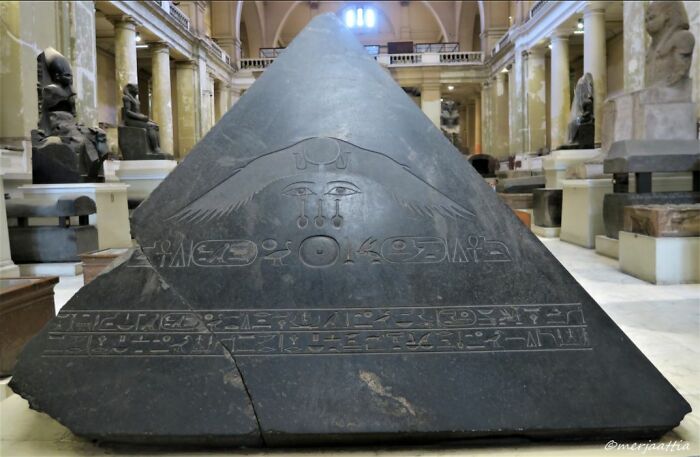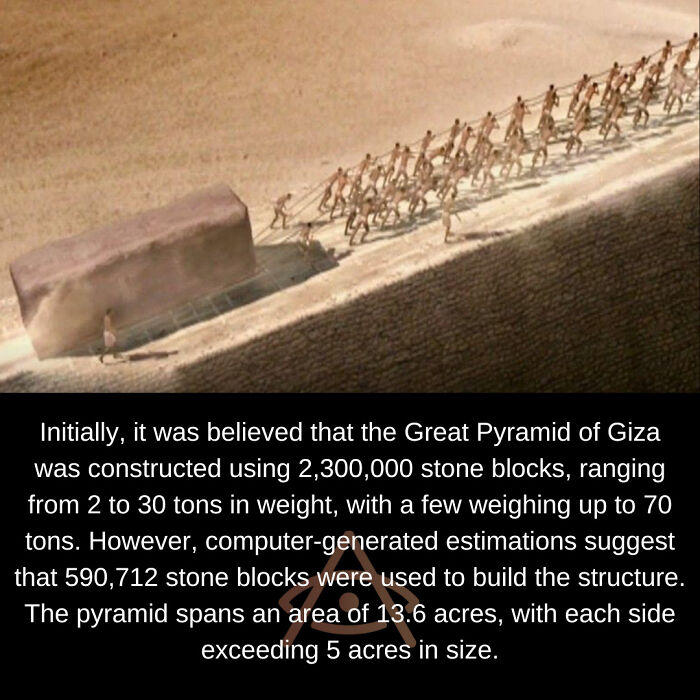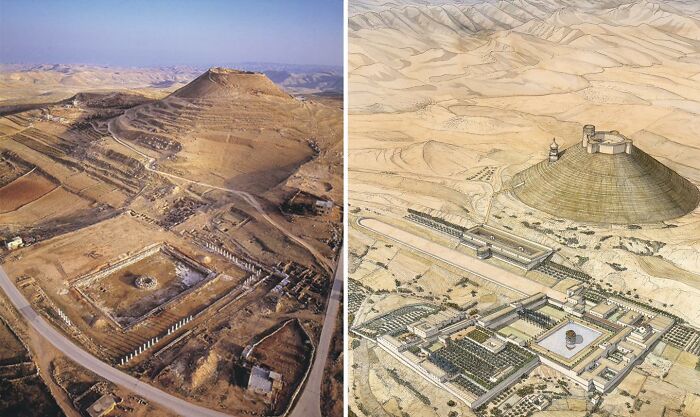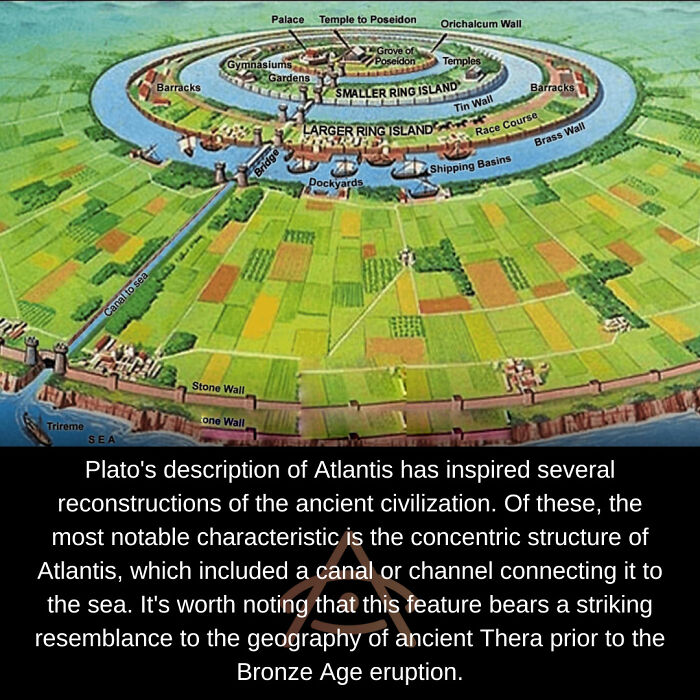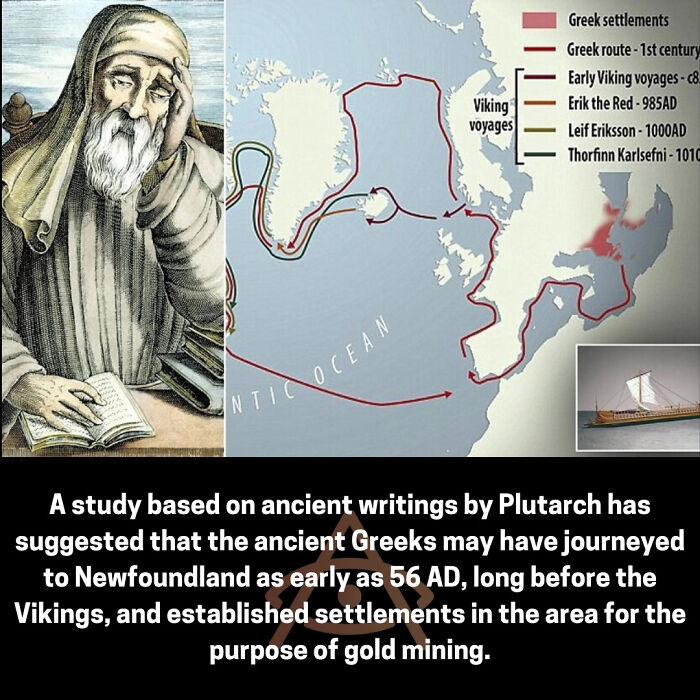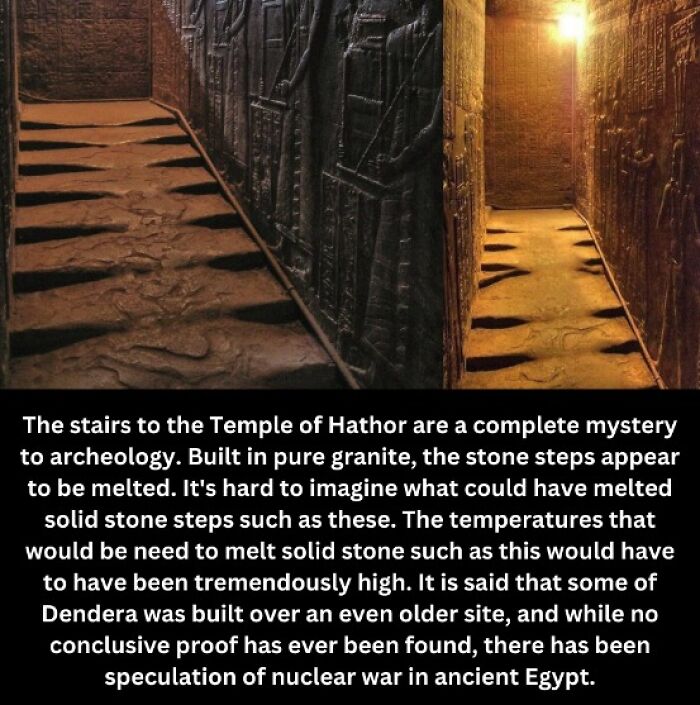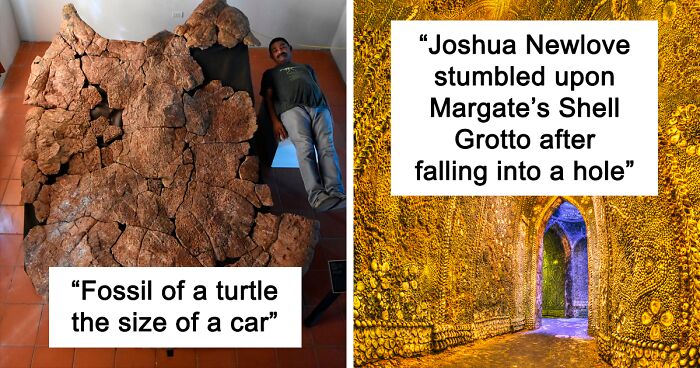
30 Fascinating Things From The Past That Survived For Future Generations To Explore, As Shared On This Facebook Group
If you’re an archaeology enthusiast, we’ve got the perfect list for you down below, pandas. We’ve taken a deep dive down the feed of Ancient Explorers on Facebook and excavated some of their most fascinating posts to share with you all.
From photos of fossils to pictures of pyramids, we hope you enjoy scrolling through this article that might give you a blast from way back in the past. Keep reading to also find conversations between Bored Panda and ancient history experts David Lee of Roman History Blog and Joanna Gillan of Ancient Origins. And feel free to underscore this list with the Indiana Jones theme song! (You can hear it now, can’t you?)
More info: AncientExplorers.com | YouTube | Instagram
This post may include affiliate links.
"Translation Of The Text Written In Gold At The Entrance To The Temple Of The Egyptian Goddess Sekhmet, Karnak Temple"
"I only ask you to enter my house with respect. To serve you I do not need your devotion, but your sincerity. Neither your beliefs, but your thirst for knowledge. Enter with your vices, your fears and your hatreds; from the greatest to the smaller ones, I can help you dissolve them. You can look at me and love me as a female, as a mother, as a daughter, as a sister, as a friend, but never look at me as an authority above yourself. If the devotion you have for any god , It is greater than the one you have for the God that is within you, you offend them both and you offend the ONE "
Cobblestones
Joshua Newlove
When we move through the world with our smartphones, heated homes, grocery stores and fancy cars, it’s easy to forget that our world has been around for literally billions of years. And while Homo sapiens, or humans, have only been here for about 300,000 years, that still leaves us with an incredible amount of history. It’s impossible to know and understand everything that humanity has been through, but thankfully, there are people out there who live for discovering more about our world’s past, and some who are even willing to share that information online.
The Ancient Explorers Facebook page writes that their mission is to “explore the history of our ancient past to make an impact on today’s and tomorrow’s,” and they certainly do a great job of that. The account, which was created on New Year’s Day in 2013, has amassed an impressive 833k followers and has posted over 10k photos. One quick scroll through the page’s feed can teach you more about fossils, ancient architecture, ancient jewelry, ancient temples and anything else that you might not have learned in history class.
This Shadow
After Undergoing Restoration Work, One Of The Most Expansive Floor Mosaics Ever Found Has Been Revealed At Hisham Palace In Jericho
The mosaic consists of 38 detailed sections that feature floral and geometric patterns made up of more than 5,000,000 stone pieces, including a 1300-year-old "tree of life."
Carlos For Scale
To learn more about why it’s so important to study our world’s past, we reached out to ancient history expert David Lee. David runs the Roman History Blog, which also has accompanying Facebook, Instagram and Twitter pages, and was kind enough to have a chat with Bored Panda about what inspired him to start studying Roman history.
“I got into Roman History as I was fascinated with Hadrian's wall as a child, and I liked visiting York, also known to the Romans as Eboracum in the North of England,” he shared. “I like the intrigue, the politics, the way the Republic changed into the rule of one man with a series of emperors. Rome expanded to encompass the Mediterranean and beyond.”
The Inscriptions That Akhenaten Left For His Wife Nefertiti On The Walls Of The Amarna Temples
"I swear by you, my God, to make her a light in my heart that will not be extinguished, and to make me a support in her back that will not be broken, for she is from me and I am from her, and we are both the secret of the existence of the other."
An essential tool that gave the Vikings the cutting edge in navigation
Lascaux
We were also curious if David could share any fun facts about Roman history that you pandas might not know, and he noted how important their legacy has been. “We still have their laws, culture, theatre, comedy, literature, buildings, military tactics and influence on the modern world."
And as far as why we should still value studying ancient history today, the history enthusiast says, “It's important to study the past so we can have a better understanding of who we are and what has happened to us and how it has influenced us in modern times.”
The Cantalloc Aqueducts, Constructed By The Nazca Civilization In The Arid Deserts Of Peru Over 1,500 Years Ago, Continue To Serve Their Purpose To This Day
These aqueducts feature distinctively shaped openings that allow wind to enter and propel water from underground aquifers through a network of underground canals, efficiently delivering water to areas where it is needed the most.
Hin Sam Wan, Also Known As Three Whale Rock
It is a stunning rock formation that is approximately 75 million years old and rises dramatically from the mountains in Thailand. Its name originates from its resemblance, when viewed from the right angle, to a family of whales, making it a unique and remarkable sight.
If you read the hitchhiker's guide you know exactly what happened there
Located At The Intersection Of Eastern Europe And Western Asia, In The Country Of Georgia, Lies The City Of Vardzia
On the slopes of Erusheti Mountain in this city, Tamar, the 25-year-old Queen of Georgia, commissioned the creation of 6,000 cave dwellings in the 12th century. These structures were carved into the rock and served as both a monastery and a place of refuge for Christian monks who were being persecuted by Mongol and Muslim invaders.
If you’d like to expand your knowledge of the ancient world but just aren’t sure where to start, David says, “There are plenty of documentaries on Youtube and other streaming sites. Also, books are a good source for learning, and we have the internet with plenty of websites with great content, including social media. I post Roman history on Twitter on a regular basis.”
“Ancient history is a fascinating subject, and you can learn so much from it. Do take the time to find out more,” he added.
If you’d like to learn more from David about the amazing history of ancient Rome, be sure to visit his blog right here!
The Arkadiko Bridge Or Kazarma Bridge In Greece Is An Astonishing 3,300-Year-Old Chariot Bridge That Is Still In Use Today
The Ancient Egyptians
At The Age Of 17, Cleopatra Became Queen Of Egypt And Ruled Until She Was 39 Years Old
She was a polyglot, as she spoke nine languages, including Ancient Egyptian and the languages of the Parthians, Hebrews, Medes, Troglodytes, Syrians, Ethiopians, and Arabs. This meant that she was able to read any book in the world.
She was also very knowledgeable in various subjects such as geography, history, astronomy, international diplomacy, mathematics, alchemy, medicine, zoology, economics, and more. Despite her many books being destroyed in a fire, some of her herbal remedies and beauty tips have survived.
Additionally, her knowledge of languages allowed her to have access to numerous papyri that are now lost. Her influence on the sciences and medicine was highly esteemed in the early centuries of Christianity, making her an unparalleled figure in human history.
1) Why the bust of Neferititi? But also Remember Egypt under the Ptolomey dynasty, she spoke Greek (their language), Egyptian (Language of the land), Persiand & Median (Languages of the next largest regional power), Aramaic (No such language as "syrian" maybe they meant the Syriac dialect of Aramaic. But Aramaic was the trade language in the region), Hebrew (an important regional language, and Alexandria had huge Jewish community, and Jews were a lot of the scholars at the time, and the powerful Judean Kingdom of the Maccabees next door was an important trade relation), Ethiopian (their southern neighbor and major trading partner), but never heard the arabic one. But it makes sense for a leader in that region to speak the most important languages at the time
We also reached out to the ancient history experts at the website Ancient Origins to gain more insight on the topic, and we were lucky enough to get in touch with Co-Founder and Chief Editor Joanna Gillan. She explained that the site came about a decade ago when she and Dr. Ioannis Syrigos “[wanted] a project that would free [them] from the constraints of nine-to-five jobs and give [them] the flexibility to operate an online business from anywhere in the world.” They tossed around their top 10 topics, and ancient history emerged as the clear winner.
When it comes to what Joanna loves most about running Ancient Origins, she shared with Bored Panda, “I love that we’ve taken a really fun approach to ancient history, selecting the most captivating, weird, surprising, strange, shocking, or lesser-known facts from our ancient world - things like lost cities, bizarre artifacts, historical enigmas, ancient cold cases, hidden treasures, and more. By doing so, we've transformed a subject often studied in universities – which can sometimes be dry and dull – into something accessible and engaging for everyone, reigniting the public's enthusiasm for the mysteries and fascination of our distant past.”
For 3245 Years
The Diary Of Merer
Pumapunku
Joanna also shared that her absolute favorite topic to study in ancient history is the Sumerians, whose amazingly advanced civilization seemed to just spring up out of nowhere in what is now Iraq. “Suddenly, around 6,000 years ago, they jumped from being hunter gatherers and then simple agricultural communities to establishing one of the world’s first civilizations," she explained. "They developed intricate writing systems, an advanced justice system, a complex social structure, well-organized cities, incredible art, literature, and architecture, sophisticated timekeeping and mathematics, and a rich mythology and religion. It is quite mind-boggling!”
The Bolinao Skull
Petrified Forest National Park
A Hug That Lasts 2000 Years, Pompeii
In 79 AD, the city was destroyed and buried under volcanic ash and pumice during the eruption of Mount Vesuvius. The catastrophic event resulted in the death of many of its inhabitants who were buried beneath the ash and debris.
However, the volcanic ash and pumice that destroyed Pompeii also acted as a preservative, protecting many of the city's buildings, artifacts, and even some of the human remains from decay. As a result, much of the city has been remarkably well-preserved, providing a unique glimpse into the daily life and culture of ancient Rome.
Joanna was also kind enough to share some fascinating fun facts about ancient history with us. “The earliest dentures were made with teeth scavenged from dead soldiers. In ancient China, they used armor made from layers and layers of paper, and in some instances, it was deemed superior to metal armor. Romans wore red-crested helmets in battle to prevent them killing people on their side,” she noted.
“In 16th-17th Britain, pineapples were a status symbol and people would pay thousands for one pineapple. They could even rent them by the hour to display at a dinner party. For 1,000 years, monks of Mt Athos in Greece have not only banned women, but also female animals,” Joanna continued. “Mary, Queen of Scots, washed with white wine to ensure a smooth complexion. Queen Elizabeth I may have died from wearing toxic lead-based makeup. Ketchup originated in ancient China. Eels were sometimes used to pay rent in the Middle Ages. Tutankhamun’s parents were brother and sister.”
This Shipwreck
That's a 2,000 year old wheelhouse, is it? There's probably a 2,000 year old diesel engine, too.
Belize
That's Old
When it comes to why it’s so important that we study ancient history, Joanna says, “[It] offers a window into our very origins – unraveling the birth of mankind and our evolution through the development of civilization, culture, society, and religion. Delving into the history of ancient societies gives us the opportunity to glean wisdom from their successes and failures, thus informing our modern lives. As the renowned Spanish philosopher George Santayana aptly noted, ‘Those who cannot remember the past are condemned to repeat it.’ While historical lessons may not always ward off doom and disaster, learning about them can help us better understand our present and also anticipate our future.”
And if you’d like to learn more about ancient history, Joanna says it’s best to get out in the field. “Visit ancient sites, talk to locals who know lesser-known facts, folklore and historical tidbits, visit museums, join tours and expeditions. You can even volunteer to participate in archaeological digs to gain hands-on experience. These adventures can help you nurture your passion and identify your specific areas of interest.”
The "Ringed" Lady
Damn
"To those holdinth the Disc of Infinite Power... Can Thy throw it further than Thy Buddies and also Drinkingfriends? Show Thyne worth with the Powerful Frith-bee"
Legendary Sword
Joanna also shared a fascinating story detailing how exciting studying ancient history can be. “In 2015, Ioannis and I were in Ecuador investigating the lost artifacts of Father Crespi, an Italian missionary who had spent 60 years there since the 1930s. He had done a lot of good work, and in return, the indigenous people brought him artifacts from all over the country, ranging from 200 to 2,000 years old and covering various cultures and ages,” she explained.
“Among these artifacts, there was a controversial subset depicting Sumerian writing, gods, and figurines. If authentic, it would imply contact between Sumer (now Iraq) and South America thousands of years ago, which is not mentioned in history books.”
“However, the controversial artifacts went missing, and we wanted to find out where they went,” Joanna continued. “We gained exclusive access to Crespi’s artifact collection in Ecuador's central bank vaults, but the Sumerian ones were missing. Upon inquiring about them, we received threats and were told not to ask about the missing artifacts and to take our investigations elsewhere. Later, we were threatened with legal action if we were to write an article about the missing artifacts.”
A Golden Ring Dating Back To The 4th Century Bc Was Discovered In The Tomb Of A Thracian King Located In The Yambol Region Of Bulgaria
This archaeological find sheds light on the craftsmanship and artistic traditions of the Thracians, an ancient people who inhabited the Balkans from the 5th century BC to the 6th century AD. The Thracians were known for their rich cultural heritage, which included elaborate burial rituals and intricate metalwork.
The discovery of the golden ring in the Thracian king's tomb underscores the importance of jewelry in Thracian society, and it serves as a testament to the skill of Thracian artisans. It also provides valuable insights into the social hierarchy and status symbols of the ancient Thracians, as the ring was likely worn by a member of the ruling class.
Overall, the discovery of the 4th century BC golden ring in the Yambol region of Bulgaria is a significant archaeological find that enriches our understanding of ancient Thracian culture and history.
w/out "robbing graves" you wouldn't even know this amazing part of history even existed...enjoy the info and pictures
“In 2016, Ioannis and a colleague, Gary, were investigating a story for Ancient Origins on the Tayos Caves in Ecuador, a vast underground network where several ancient artifacts have been recovered in the past, but many parts of the cave remain untouched and unexplored,” Joanna shared. “Like something out of an Indiana Jones episode, they were captured by a machete-wielding tribe in the Amazon jungle for accidentally straying into their territory. They were taken back to the village and put on trial. The villagers voted that they were guilty, but Ioannis and Gary managed to talk and pay their way out of it, before being left in the jungle in the middle of the night. So, a website on ancient history is not all dusty academic articles and artifacts!”
If you’d like to learn more about ancient history, be sure to visit AncientOrigins.net right here!
Great Zimbabwe Refers To The Stone Ruins Of A Historic City Situated Near Present-Day Masvingo, Zimbabwe
Archaeological studies suggest that the central ruins and the adjacent valley were home to a Shona community of 10,000 to 20,000 people. This city was the focal point of a prosperous trading empire spanning from the 11th to the 15th centuries. Its economy was primarily based on cattle farming, crop cultivation, and the export of gold to the Indian Ocean coastline. The Kingdom of Zimbabwe, an influential Shona trading empire, had its capital in this city, which is named after the Shona phrase for "stone houses."
We hope you’re enjoying this virtual trip to an ancient history museum, pandas. Whether you’ve studied archeology yourself or you didn’t realize that dinosaurs and humans never coexisted, we hope you’ve been able to learn something new here today. Feel free to share any other fun facts about ancient history that you know down below, and keep upvoting the images you find most captivating! Then, if you’re interested in reading another Bored Panda article featuring artifacts that have been preserved for many years, check out this story next!
German Oath Skull
Ancient-Explorers-Historical-Archaeology-Pics
Queen Tiye, Who Was Married To King Amenhotep III, The Mother Of King Akhenaten, And The Grandmother Of King Tutankhamun, Has Been Discovered In Mummified Form
She was the daughter of Yuya and Tuya, who were also significant figures in ancient Egyptian history.
The Atacama Giant, Located In The Expansive Atacama Desert Of Chile, Is A Massive Geoglyph Depicting An Anthropomorphic Figure
This remarkable geoglyph is just one of nearly 5,000 geoglyphs that have been uncovered in the Atacama Desert in the past 30 years. Standing at an impressive height of 119 meters, the Atacama Giant is recognized as the largest known prehistoric representation of a human figure, making it a truly awe-inspiring and significant archaeological discovery.
Bluetooth
The Famine Stela
The Kumbhalgarh Fort, Which Is The Second Longest Wall In The World At Approximately 38 Km In Length, Is Designated As A Unesco World Heritage Site
Also known as the Mewar Fortress, it was the birthplace of the renowned Rajput ruler, Maharana Pratap. Every aspect of the fort was constructed with the purpose of preventing unwanted intruders.
Ancient-Explorers-Historical-Archaeology-Pics
Wow
The Olmecs
Knocking At Death’s Door: A Sculpture By Giovanni Battista Cevasco
In this poignant artwork created in 1875 by Giovanni Battista Cevasco, a widow is depicted knocking on death's door with one hand, while holding a wreath of victory in the other. The wreath symbolizes triumph over death, representing resurrection and renewal.
The widow in the sculpture is identified as the wife of Pietro Badaracco, a person of wealth as indicated by her attire. Above the door, various symbols are depicted, including a compass, an anchor, books, a globe, and a ship's helm, alluding to the deceased's occupation as a captain of a ship or shipping fleet. The door-knocker itself bears a winged hourglass, symbolizing the fleeting nature of time.
the details on the shawl are splendid but look at the folds on her bust it is amazingly realistic 1920px-Non...2bf636.jpg 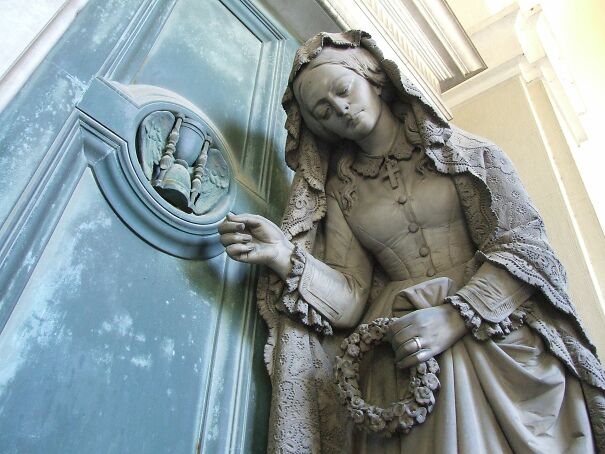
Colosso Dell'appennino
Fort Bourtange (Dutch: Vesting Bourtange), Located In The Village Of Bourtange In Groningen, Netherlands, Was Built In 1593 Under The Orders Of William The Silent
Its primary purpose was to protect the only road between Germany and Groningen, which was then controlled by the Spanish during the Eighty Years' War. It experienced its last battle in 1672, and continued to be part of the defensive network on the German border until it was abandoned in 1851 and converted into a village. Today, Fort Bourtange is a historical museum.
Dead Zone
The Iraqi Museum Houses An Ancient Clay Tablet That Was Discovered In Uruk (Warka), Located In Southern Iraq. This Tablet Is Inscribed With Cuneiform Script And Features Three Geometric Circles Containing Astronomical Calculations
The tablet is estimated to date back to the ancient Babylonian period, specifically between 2004-1595 BC. This artifact can be found in the Babylonian Gallery of the Iraqi museum.
The Sumerians are commonly called "the first astronomers", with star maps and a recognition of five planets. They kept detailed records of the stars and sky around natural events, and created calendars around it to chart events and pay days. The Greeks took a lot of influence from their methods. The Sumerians, Akkadians, and Babylonians were all pretty accomplished with astronomy.
An Ancient Mummified Foot Has Been Uncovered From The Sands Of Saqqara
This discovery offers a glimpse into the burial practices and beliefs of ancient Egyptians, who placed great importance on the preservation of the body as a means of achieving eternal life. The practice of mummification involved the careful removal of internal organs and the application of various preserving agents, such as salts and resins, to the body.
The appearance of this mummified foot suggests that there may be other remains buried in the surrounding area, which could provide valuable insights into the lives and culture of the ancient Egyptians who lived in the Saqqara region.
A Limestone Relief Found In Amarna Showing Akhenaten, Nefertiti, And Their Offspring In Worship Of Aten, Dating Back To Approximately 1372-1355 Bc
Coins Made Of Copper Were Found Within The Burial Site Of A Chinese Tomb Dating Back To The Tang Dynasty, Which Existed Between 618 And 920 Ad
The Codex Gigas, Known As The Devil's Bible, Is Renowned For Three Distinct Reasons
Its status as the largest illuminated medieval manuscript in existence, its impeccably uniform script that seems almost inhuman in its precision, and its inclusion of a full-page portrait of the Devil. Believed to have been written between 1204 and 1230, this colossal tome measures 92 cm in height, 50 cm in width, 22 cm in thickness, and weighs a staggering 79 kg. Originally comprised of 320 vellum leaves, purportedly made from the skins of 160 donkeys (with each donkey providing two pages, covering a total area of 142.6 square meters), the manuscript now contains 308 leaves as 12 leaves were removed at an unknown time for unknown reasons. While illuminated bibles of substantial size were not uncommon in monastic book production, the Codex Gigas stands out for its exceptional page dimensions.
The manuscript is written in carolingian minuscule, a popular and highly legible medieval script, and features intricate illuminations throughout its pages, including decorated letters, geometric and plant-based designs, a depiction of Josephus, and the infamous caricature-like portrait of the Devil. Additionally, there are two illustrations representing Heaven and Earth, complete with the sun, moon, stars, and a sea-based planet devoid of landmasses.
Bound in a single volume with thick wooden boards covered in white leather adorned with unique blind stamps not found elsewhere, the Codex Gigas also boasts metal fittings on all four corners and the center of the boards, along with two more metal fittings on the back that may have been used to chain the manuscript to a piece of furniture, likely as a security measure to prevent theft. The binding of the Codex Gigas was damaged in a fire, and in 1819 it was rebound by a skilled artisan in Stockholm who was paid 78 riksdaler for materials and labor, a sum that could have purchased two cows at the time.
Swords Marked With "Ulfbhrt"
They were made with all kinds of steel in the blade; pattern welded, heat treated, mixture of both, crucible. They demonstrate a transition between Viking and mediaeval swords, and are believed to be of Frankish origin. Crucible steel has been in use since 300 BC, and has been used in European swords since 300 AD.
There is evidence that the Sphynx was meant to be larger, with abandoned toolkits and unprocessed stone being found nearby. It is also heavily weather damaged, and human damaged. Early attempts at restoration without proper knowledge of handling a limestone structure of that size meant that the wrong mortar was used and stressed the erosion damage further - this has now been fixed. Just remember that the Sphynx is already unusual as Sphynxes go, and parts of the lower body have been restored while the heavily damaged head has not. It is incomplete, possibly due to Khafre's death, but it was certainly a Sphynx.
Catal Huyuk
UFO
It was a comet. It was recorded by the Chinese the same year. Interestingly, if the Chinese records are correct (and they were fairly meticulous with their records of celestial movements at the time), it was the largest comet to ever pass earth. They recorded 10 tails, and said that it filled a large portion of the sky. I's believed that Earth passed through [one of the] tails as the meteorite shower was equally as impressive.
Machu Picchu
The Stele Of Thonis-Heracleion, Crafted By Pharaoh Nectanebo I (378-362 Bc) Near Alexandria, Egypt, Has Been Lifted From The Sea 🌊 Where It Had Been Submerged For More Than A Millennium
Two half circles seperated by a line - maybe coincidental symbol useage?
Thonis-Heracleion
An Incredibly Captivating Aerial Image Showcasing The Ancient Maya City Of Uxmal
The timeline of Uxmal's eventual abandonment remains uncertain and debated among scholars, although it is believed that the Maya likely occupied the city for a longer duration compared to their southern counterparts, whose cities started declining in the 9th century. According to Kowalski, Uxmal may have ceased to function as an active political capital in the region around 950 A.D., although some researchers argue that a centralized government may have persisted until the 10th century or even later.
Present-day archaeologists continue to study the exquisite ruins of Uxmal, including its renowned pyramid and the grand House of the Governor, in order to understand how the Maya civilization adapted to evolving challenges posed by enemies and the changing natural environment. Uxmal continues to reveal surprises and provide new insights into what life was like over a thousand years ago at this ancient city.
Photo credit goes to the respective owner.
Discover The Delightful Town Of Centuripe, Shaped Like A Person And Nestled In The Hills Of Central Sicily, Italy
This one-of-a-kind town showcases a captivating blend of ancient history and urban planning, with its streets and buildings arranged in the shape of a human figure.
Peru
I have a whole lot of slides my great uncle took from a plane flight over geography, somewhere in this glorious world...they are fascinating
Gavrinis
The Nabataean's Qasr Al-Farid, Commonly Referred To As The 'Lonely Castle', Is Situated In Madâin Sâlih, Also Known As Al-Hijr Or Hegra, A Significant Archaeological Site Located In The Northern Region Of Saudi Arabia
The Nabataean Kingdom once held dominion over an extensive territory stretching from northern Arabia to the southern Levant, which enabled them to control the lucrative Incense Route that passed through the Arabian Peninsula. The Nabataeans amassed immense wealth and power from this trade, which is reflected in the grandeur of the structures they built. One of the most recognizable Nabataean monuments is the al-Khazneh in Petra, Jordan, but they were also skilled rock-carvers, as seen in the Qasr al-Farid.
The Marble Stairs Of The Leaning Tower Of Pisa
The tower, which is believed to have 296 or 294 steps depending on the staircase, experiences a discrepancy of two steps on the north-facing staircase of the seventh floor.
During the construction of the tower in the 12th century, the soft ground was unable to provide adequate support for the weight of the structure, causing it to start leaning. This issue continued throughout the tower's completion in the 14th century, resulting in its distinct tilt.
The tower's structural issues and leaning pose an interesting engineering and architectural challenge, and it has become a popular tourist attraction as a result. Despite efforts to stabilize the tower and prevent further tilting, the tower continues to lean and is monitored for safety reasons.
The repair workers pulled these steps out to “flip them” so that they had a smooth surface for visitors to walk on. However, they found out that they had already been flipped previously and were in a similar state of erosion on the underside.
Joseph Flavius
The Medallion Depicts The Image Of Alexander The Great, And The Gold Coins Were Used By The Hellenistic Kings During Their Reign
The Hellenistic period refers to the time when Greek culture and influence spread throughout the Mediterranean world after the conquests of Alexander the Great.
Comparison Of Stonehenge: An Imagined Druid Festival In 1815 (Top) By C.h. Smith And S.r. Meyrick, With Stonehenge Today (Bottom) By English Heritage
Located on Salisbury Plain in Wiltshire, England, Stonehenge is a prehistoric monument consisting of an outer circle of towering sarsen standing stones, approximately 4.0 meters tall, 2.1 meters wide, and weighing 25 tons, connected by horizontal lintel stones. This ancient structure, now in a state of ruin, is positioned to align with the sunrise during the summer solstice.
Constructed in six stages spanning from 3000 to 1520 BCE, during the transition from the Neolithic Period to the Bronze Age, Stonehenge was designated as a UNESCO World Heritage site in 1986.
A lot of those ancient sites were willfully destroyed by the locals who used the stones as building materials. The Colosseum in Rome was used as a quarry, to build St. Peter's Cathedral. Many of those stone circles were removed by Christian fanatics who did not want to have those pagan edifices in their neighbourhood. Or possibly by farmers or other landowners who wanted to use their fields more effectively.
Menhir De Champ-Dolent, A Massive Menhir In Brittany, France. Most Likely Erected Between 5000–4000 Bc
Stone Circles
Nemrut Dağı, Also Known As Mount Nemrut, Is A Mountain Located In Southeastern Anatolia, Turkey
At its summit lies a captivating site, the funerary mound of Antiochus I, who was a ruler of the ancient Greco-Persian kingdom of Commagene during the 1st century BC.
Dating Back To The 4th Century Bce, The 'Piraeus Athena' Is A Bronze Sculpture That Was Discovered In Piraeus, Greece In 1959
Along with three other bronzes, during the installation of underground pipes by workers. The sculpture is currently exhibited at the Archaeological Museum of Piraeus.
The World's Oldest Banking System Is Referred To As The "Ecodar", Which Is Derived From The Word "Agadir" In Its Plural Form
The term linguistically signifies a collective or communal storehouse, and it was invented by the Berber Moroccans. The Ecodar or collective warehouses were structures with high walls and towers built on mountaintops, which were utilized in the past to secure and preserve the possessions of Berber families from looting and theft. Although these structures are no longer in use today, they are deeply rooted in the history and soil of Morocco, where the Amazigh Ecudar can still be found towering over the highlands outside the city of Agadir.
The Kabayan Mummies, Also Called The Benguet Mummies, Ibaloi Mummies, Or Fire Mummies Of The Philippines, Are A Collection Of Mummified Human Remains Discovered On The Mountain Slopes Of Kabayan, A Town Situated In The Northern Region Of The Philippines
These mummies date back to as early as 2000 BCE and are currently preserved in their natural caves and a museum located in Kabayan.
According to scientists, the Fire Mummies, which were found buried in caves across five towns in Benguet, were likely created by the Ibaloi people during the period of 1200 to 1500 CE. However, some contend that the mummification process may have started as far back as 2000 BCE. The distinctiveness of these mummies lies in the method used for their preservation.
Here is the rest of the wikipedia paragraph for anyone interested: "That mummification began shortly before a person died, where he would digest a very salty drink. After his death, his corpse was washed and set over a fire in a seated position, thus drying the fluids. Smoke from tobacco was blown into the mouth to dry the body's inside and internal organs. Eventually, herbs were rubbed into the body.[2] Mummified bodies are then placed in a coffin made of pinewood and laid to rest in rock shelters, natural caves or man made burial niches."
Egypt
It is believed by evidence of the unfinished obelisk that they shaped them by hammering them with hand sized dolerite balls, the balls were found all over the obelisk quarry site and do a good job pulverising granite. They carved them by putting sand on the area and using a copper tool, letting the sand abrade the stone.
The Ancient City Of Jericho
Scientists Have Long Been Baffled By The Enigma Of The Benben Pyramid, Which Has Remained Unresolved For Years. This Pyramid, Constructed From Black Stone, Is Unlike Any Ordinary Rock Found On Earth
Its composition includes components that are typically found in space meteorites, such as black ironstone. What adds to the mystery is that this ironstone is exceptionally hard, making it challenging to shape and carve. However, it is also prone to breaking easily, raising questions about how the pyramid was precisely cut with such accuracy in terms of angles and deviations. Furthermore, the pyramid exhibits intricate inscriptions on its sides that appear to be too delicate and precise to have been crafted by any known tools, ancient or modern, leading scientists to speculate the use of advanced laser cutting technology. Moreover, the unique composition of the black meteorite stone is believed to possess positive electromagnetic energy that is transferred to its surroundings, creating a sense of psychological comfort for those who approach it, and affecting human energy. This phenomenon adds another layer of intrigue to the mysterious properties of the Ben Ben pyramid that continue to defy scientific explanation.
Source? Wikipedia says it's made from basalt, not some mysterious super-hard alien material as this post makes it sound like
Ancient-Explorers-Historical-Archaeology-Pics
Herodium, Situated In Palestine, Is A Grand Palace-Fortress And Town Constructed By Herod The Great During The Period Of 23-15 Bc
It encompasses an elevated palace-fortress perched atop a hill, commanding a view of a sprawling pool complex in the lower Herodium, along with a lower palace, residential structures, a theater, and a synagogue.
Plato
Plutarch
The Temple Of Hathor
it's probably "melted" from the amount of people using those stairs over a really long period of time just like many other stairs all over the world. Who writes these type of bs posts? No one with some leftover sanity in their head speculates about a nuclear war in ancient Egypt
Love the discoveries. Speculation on what it was or what it was used for. Imagine in 500 years they dig up the red balls in front of the Target store and try to explain those.
I think that the discovery of Legoland will raise a lot of questions
Load More Replies...Love the discoveries. Speculation on what it was or what it was used for. Imagine in 500 years they dig up the red balls in front of the Target store and try to explain those.
I think that the discovery of Legoland will raise a lot of questions
Load More Replies...
 Dark Mode
Dark Mode 

 No fees, cancel anytime
No fees, cancel anytime 






